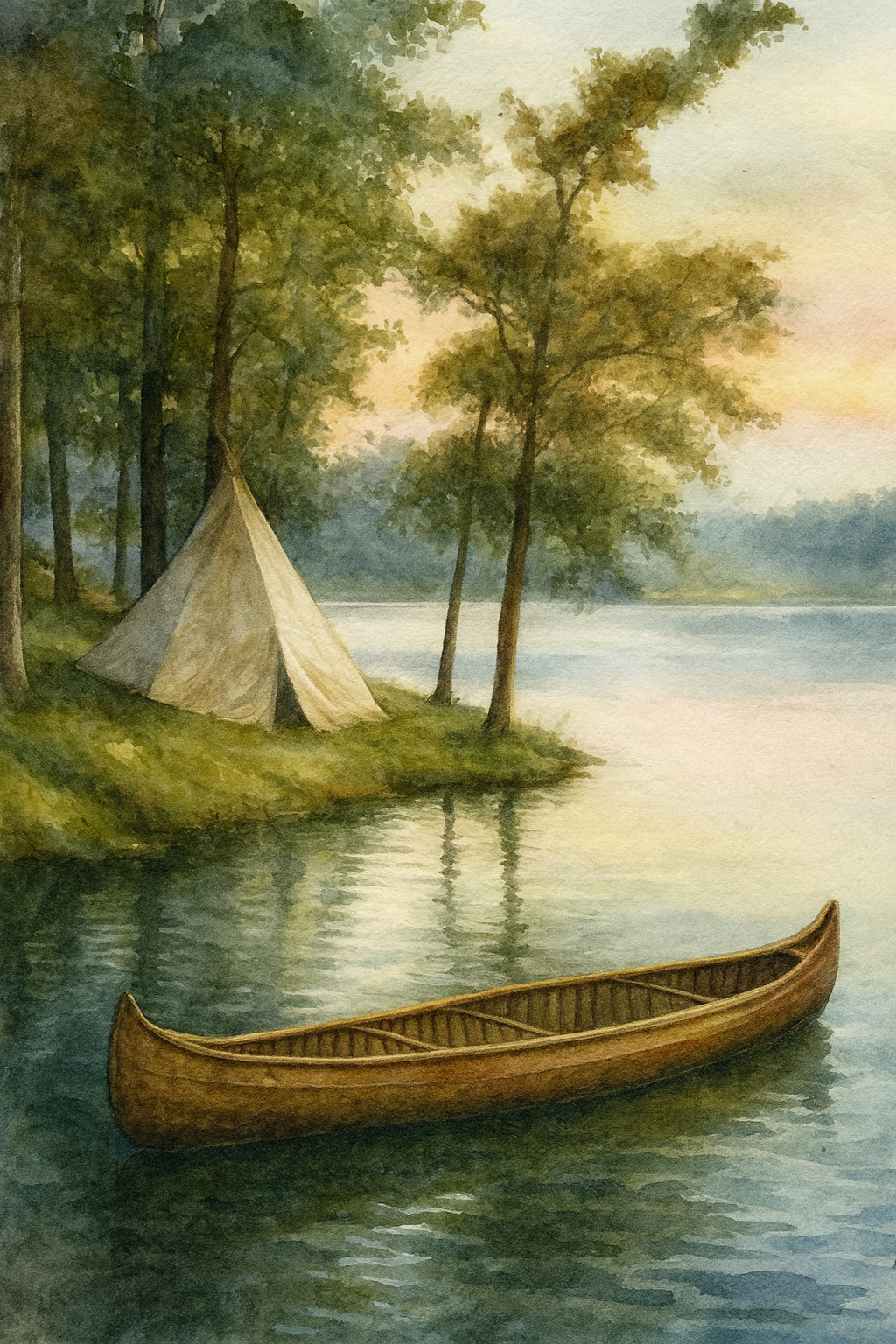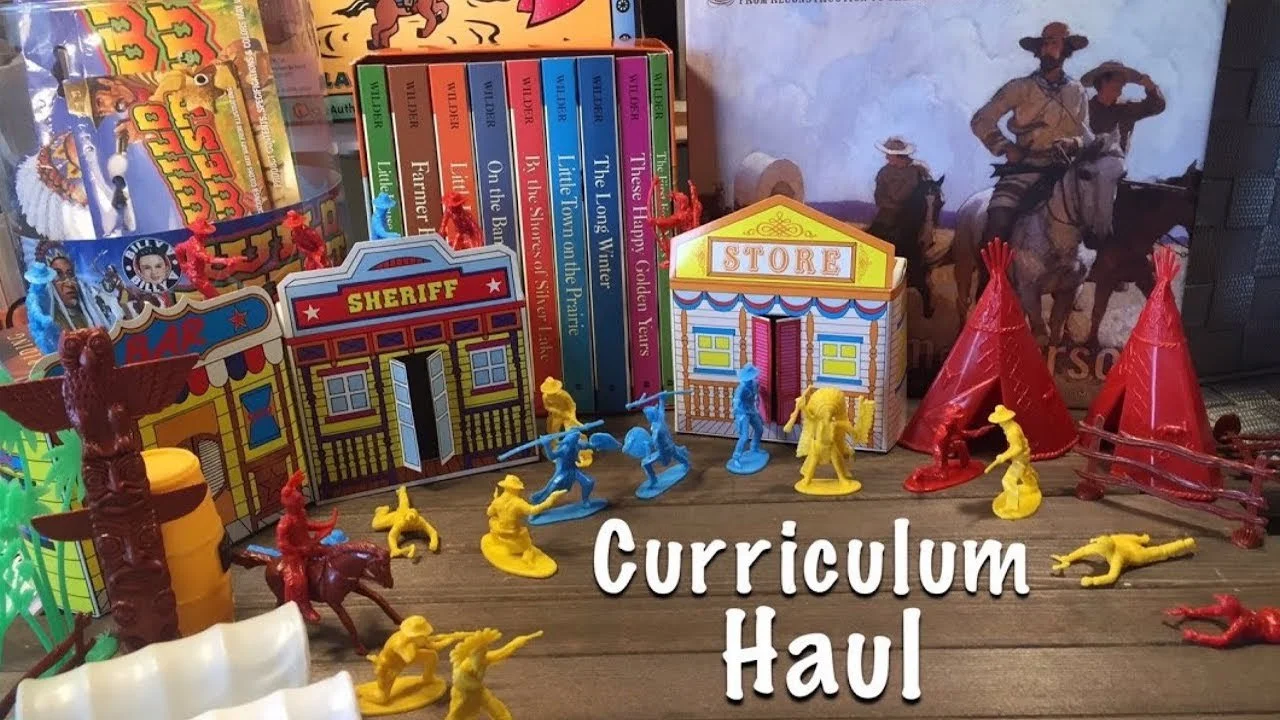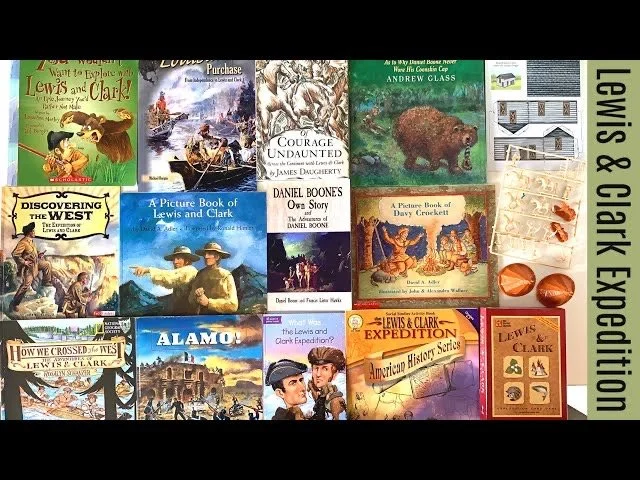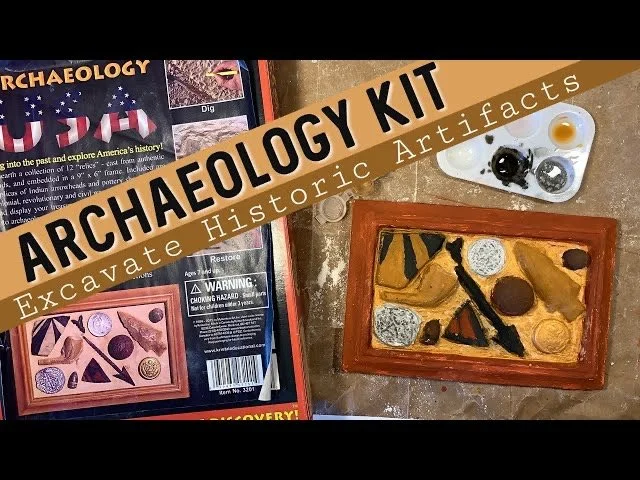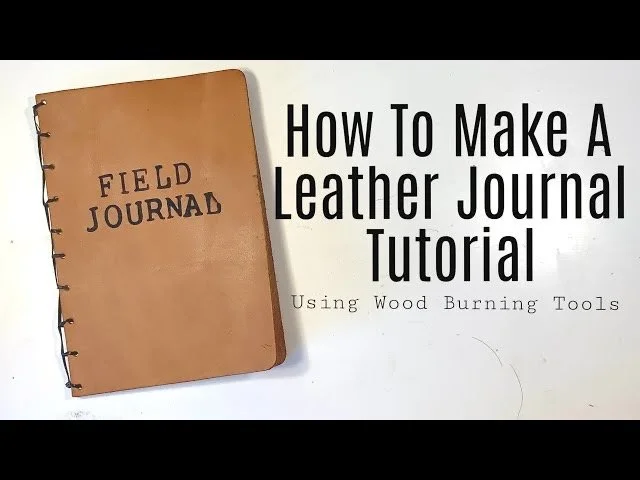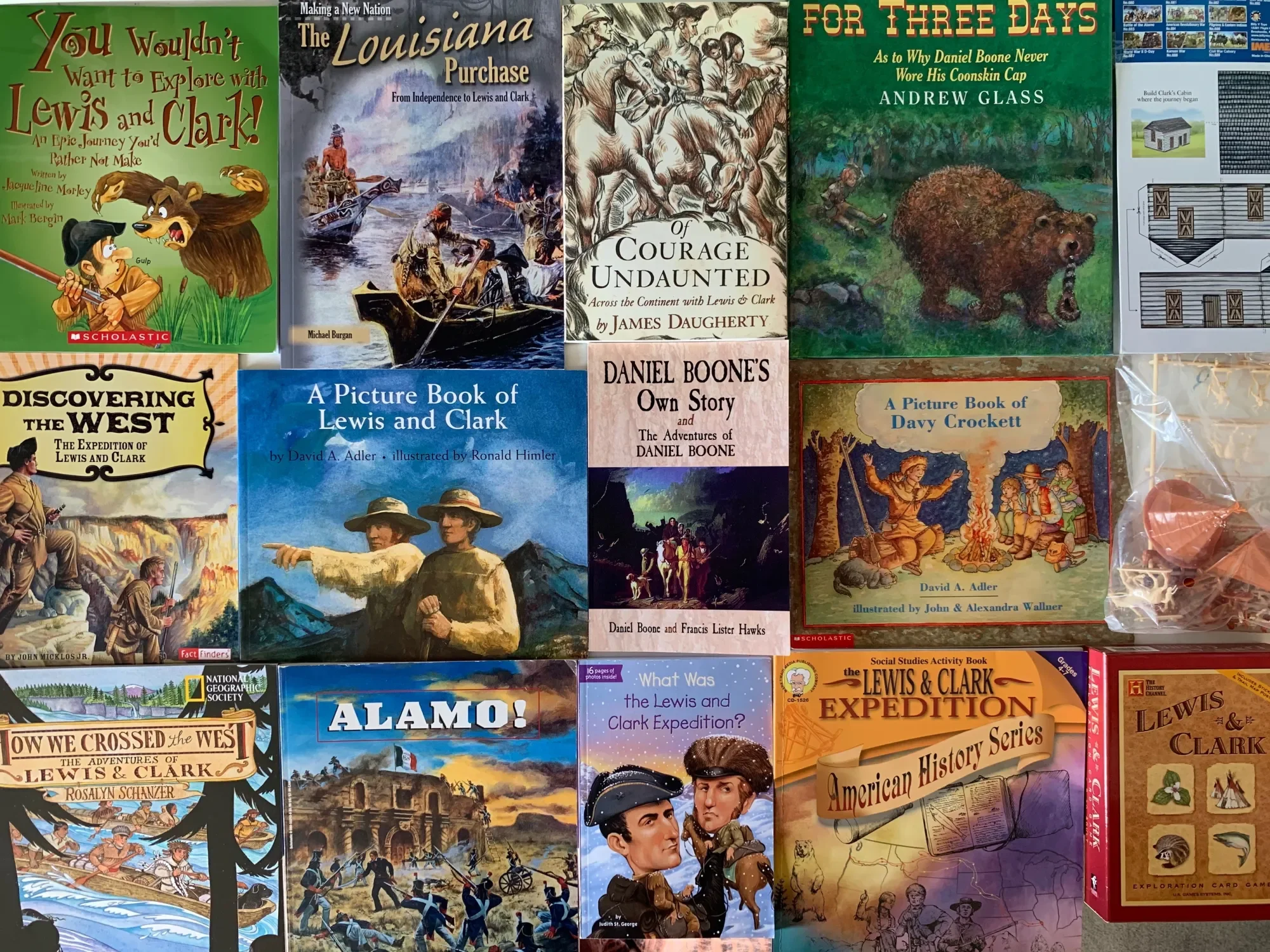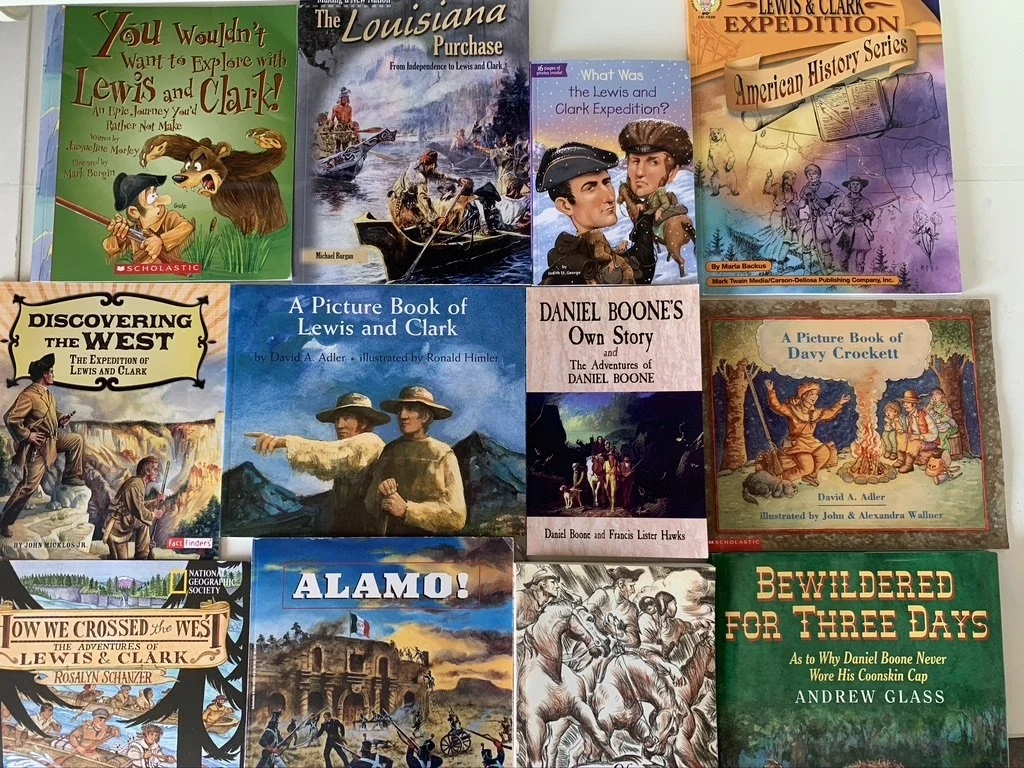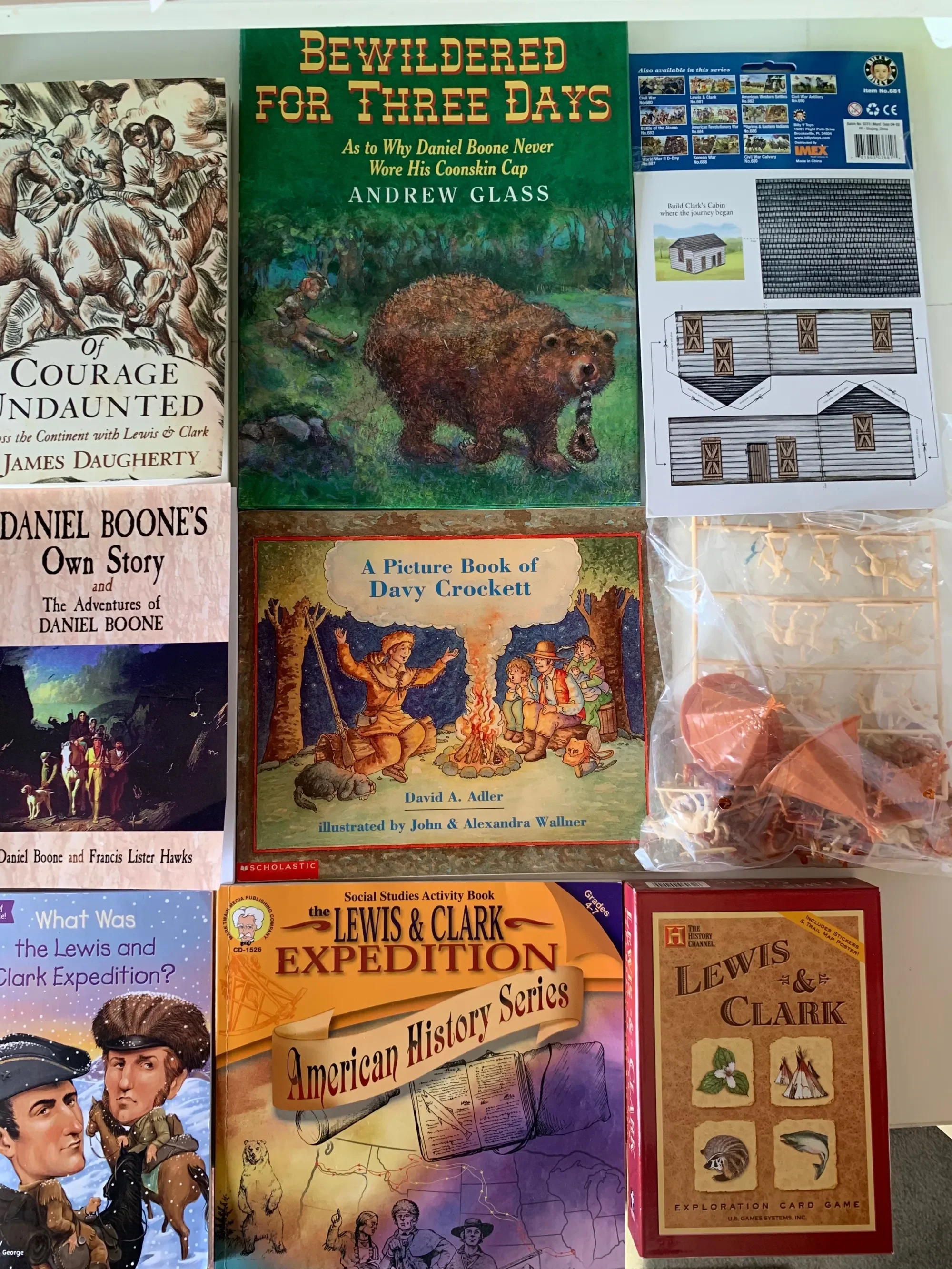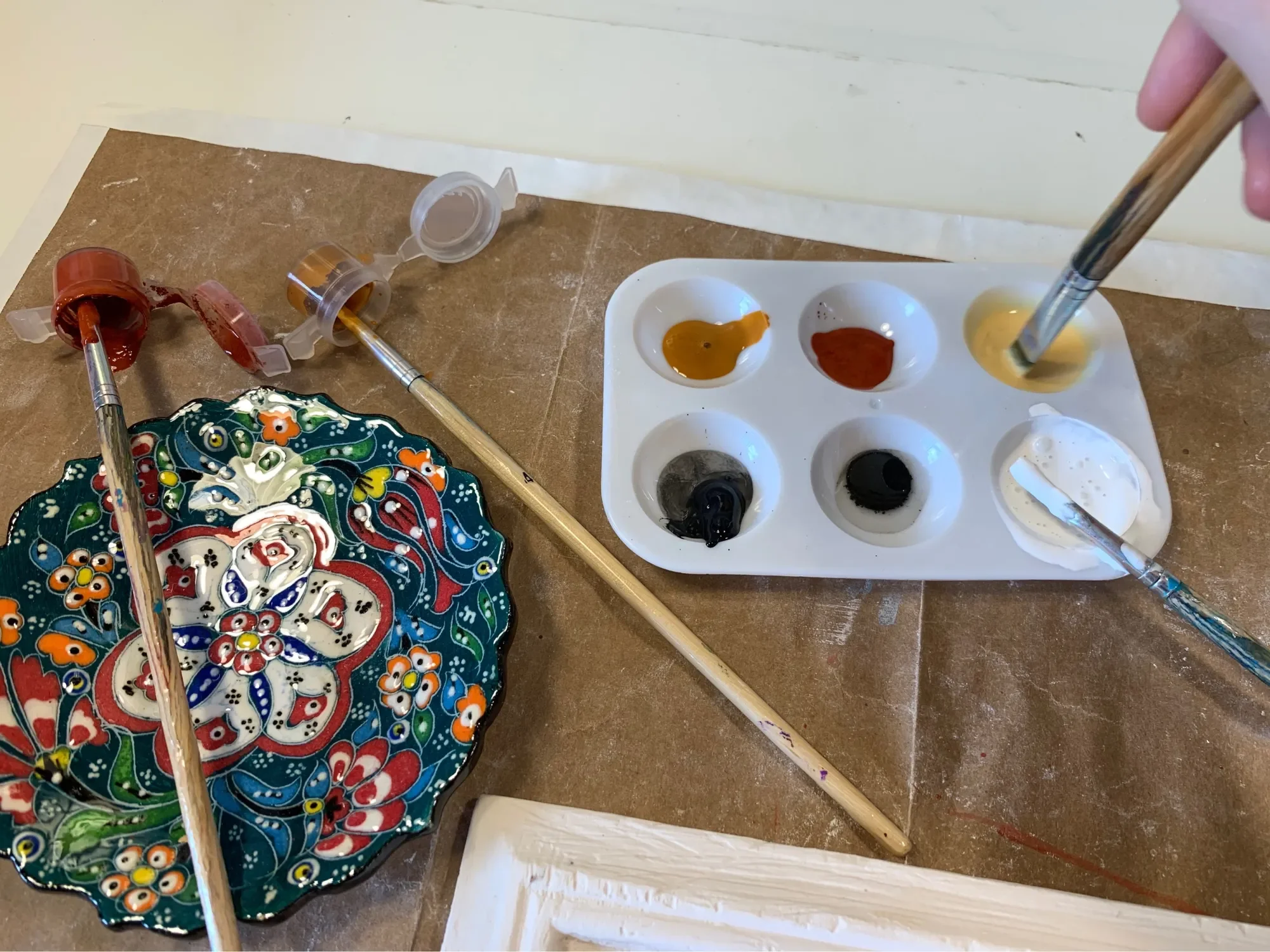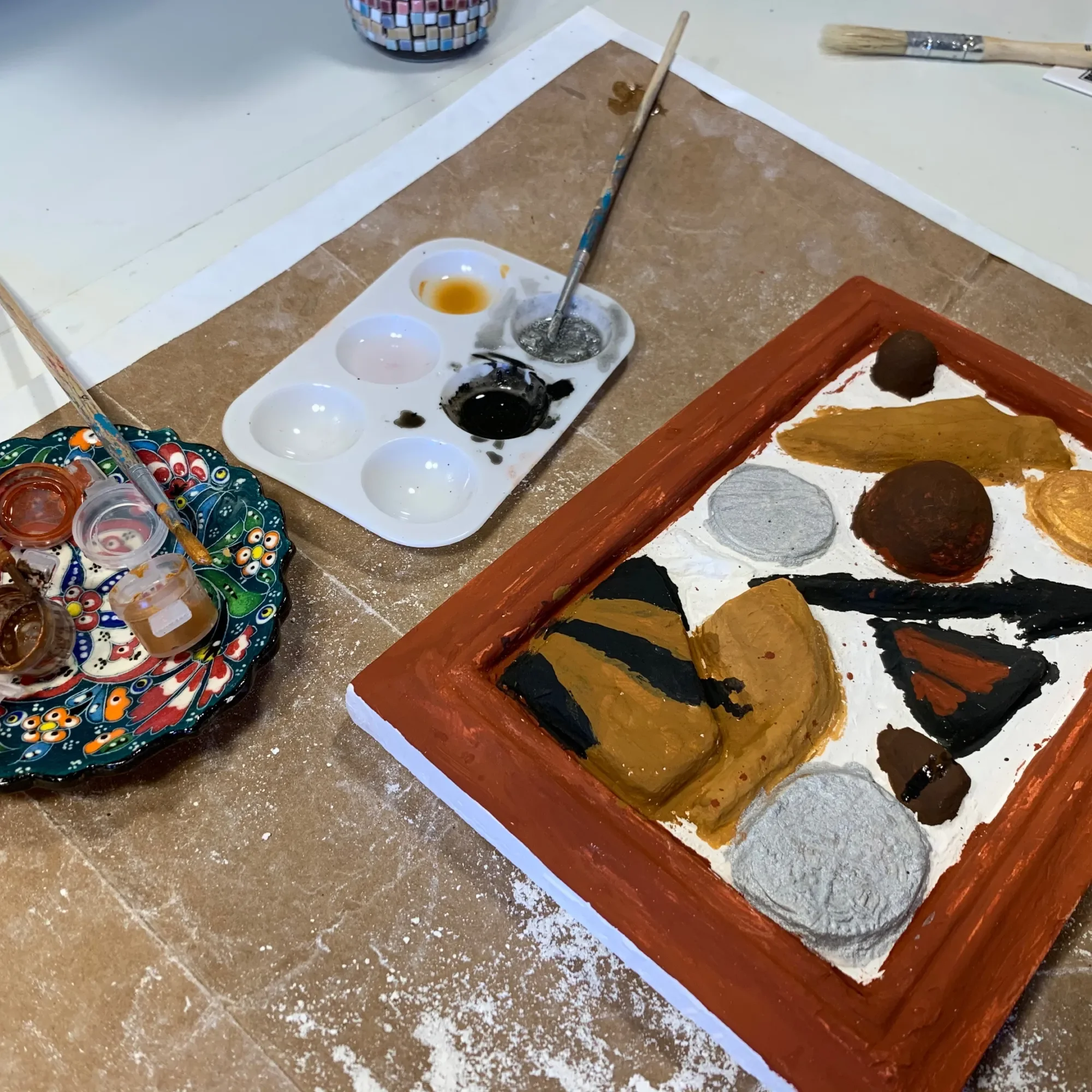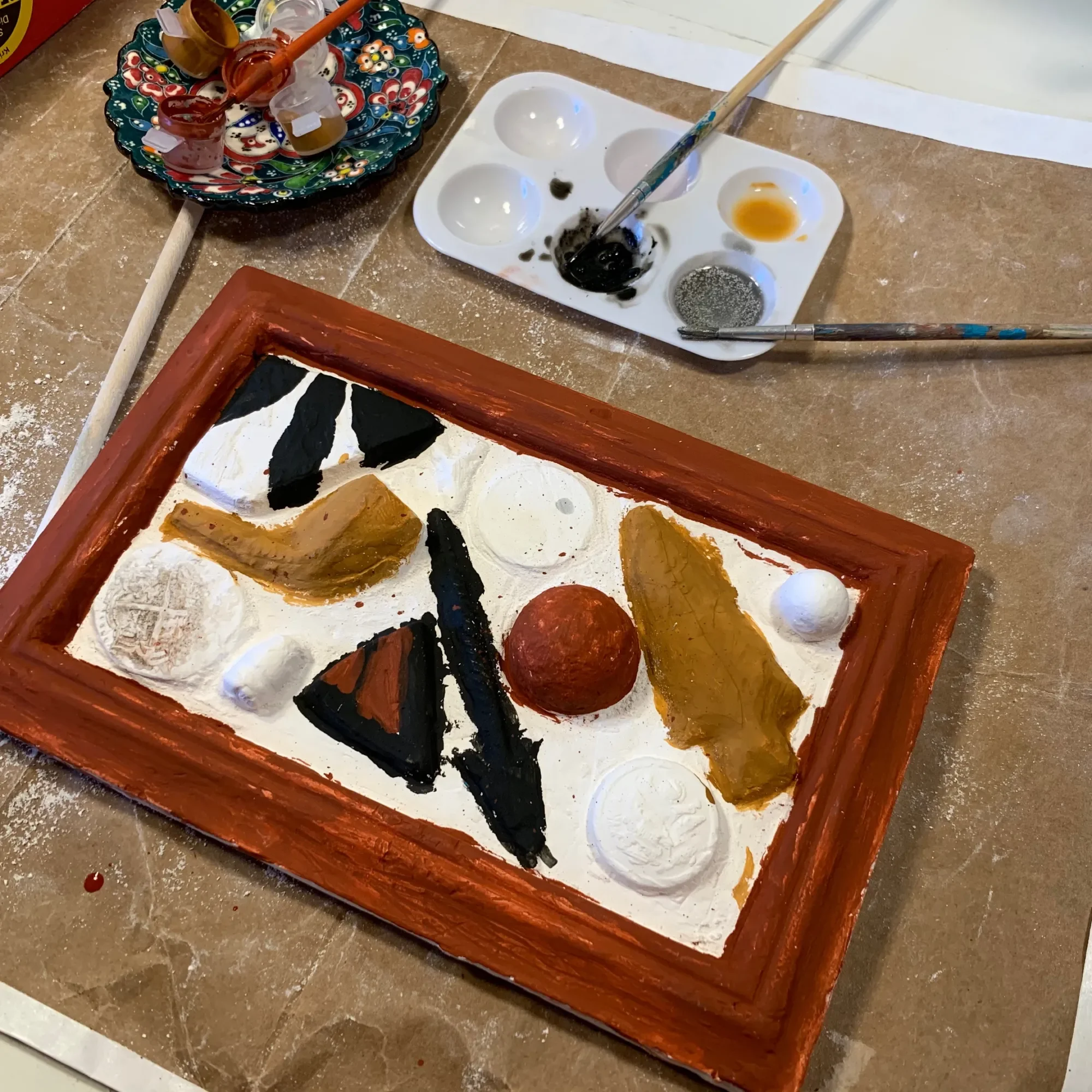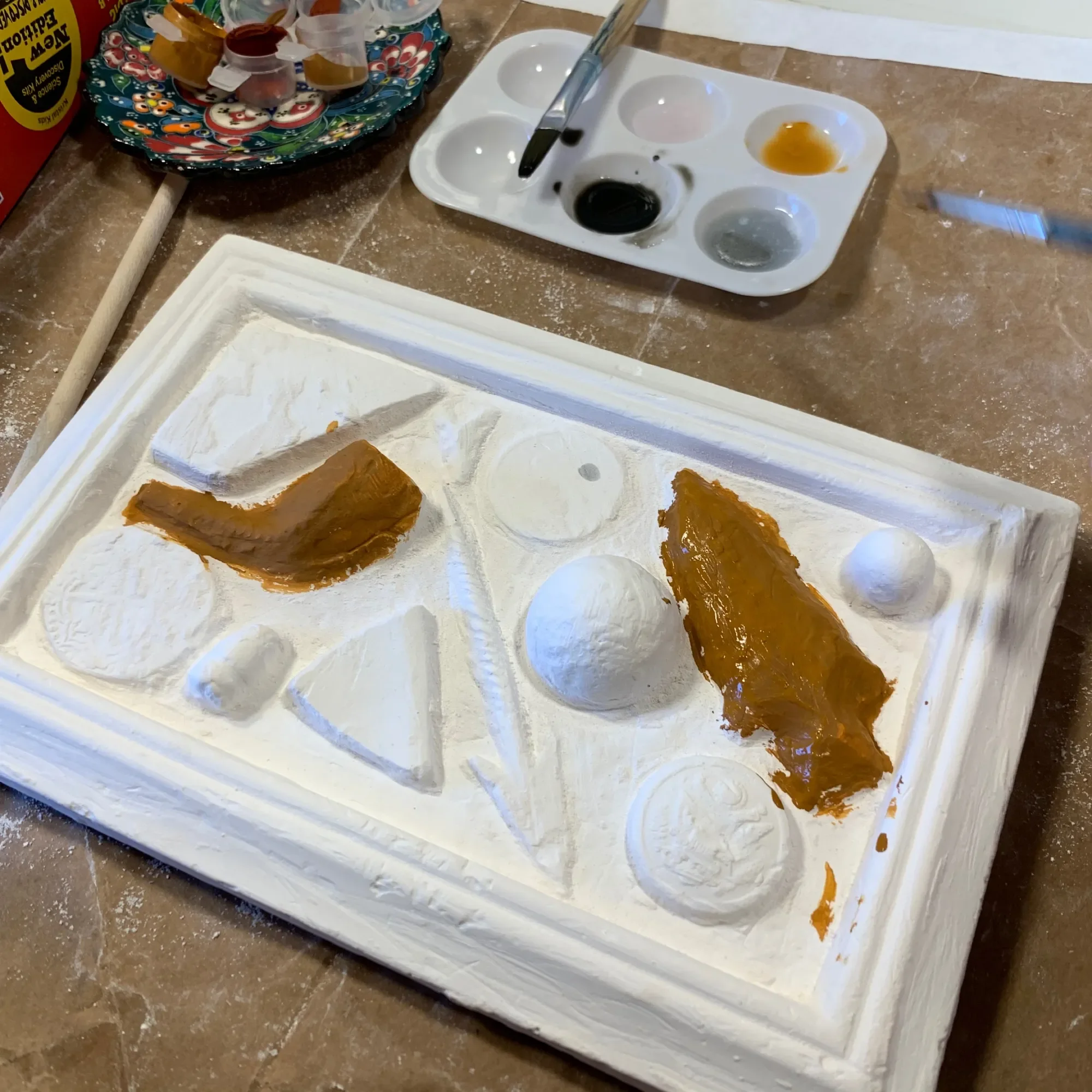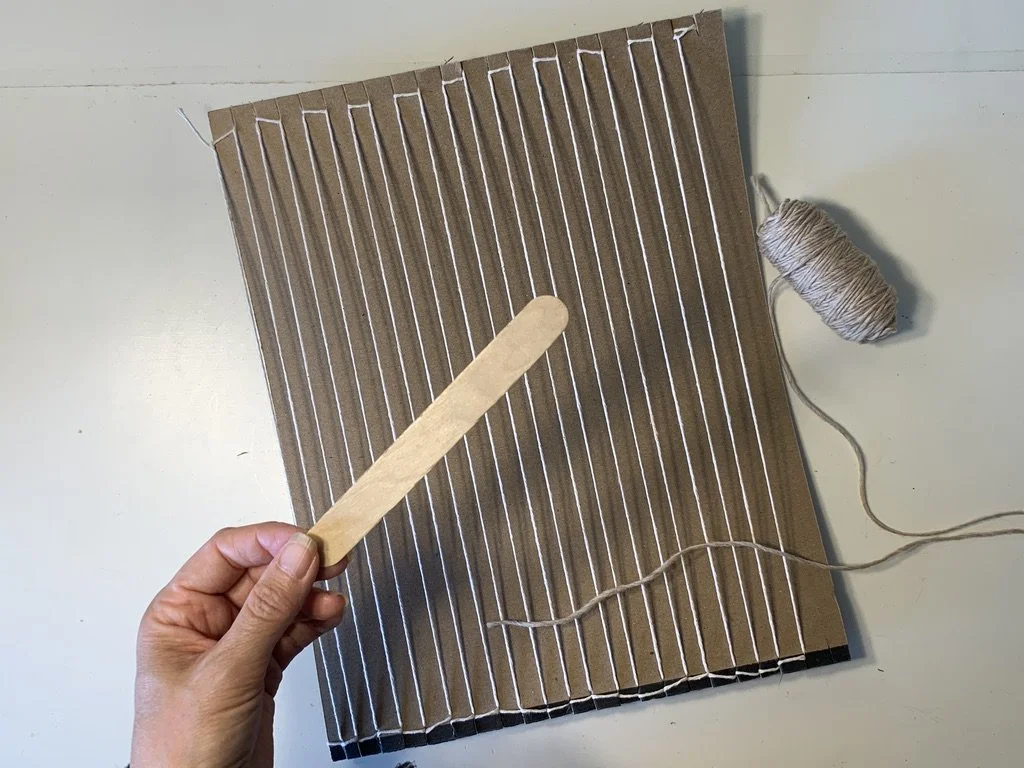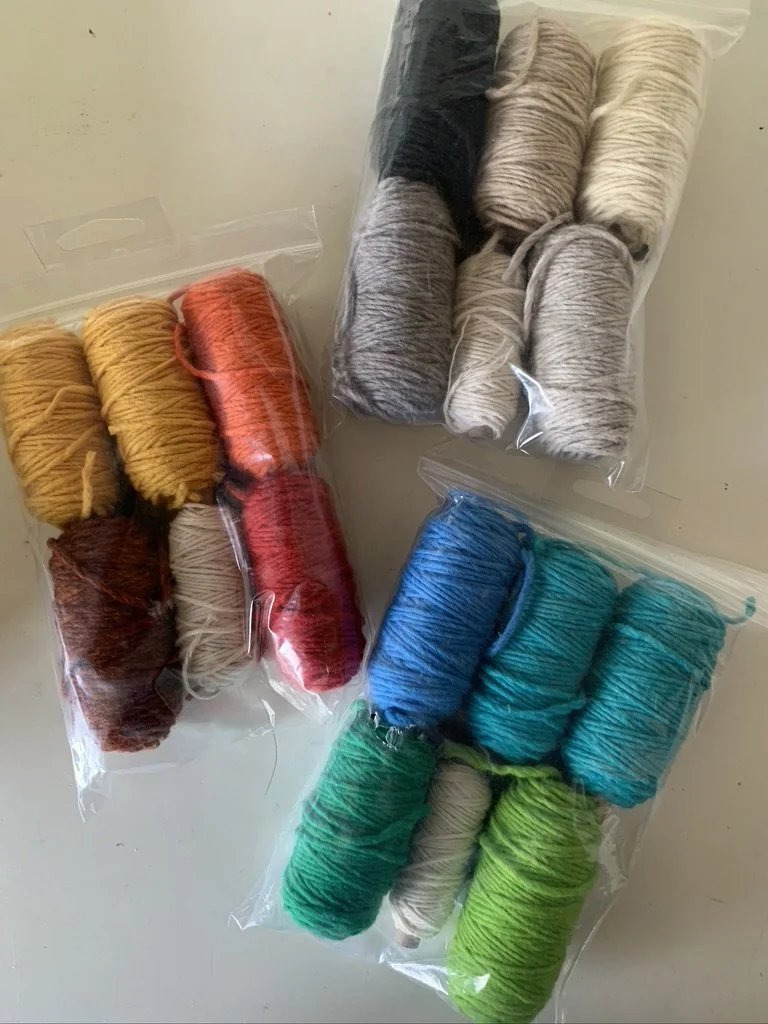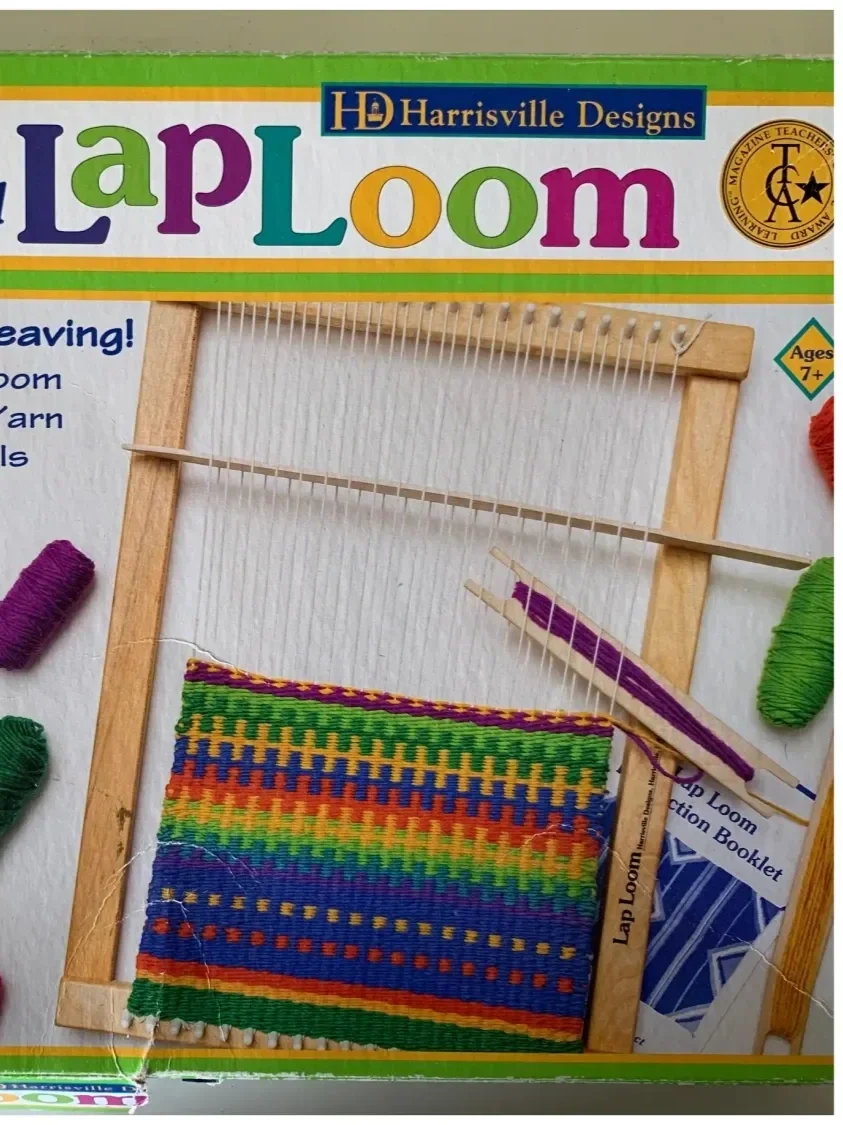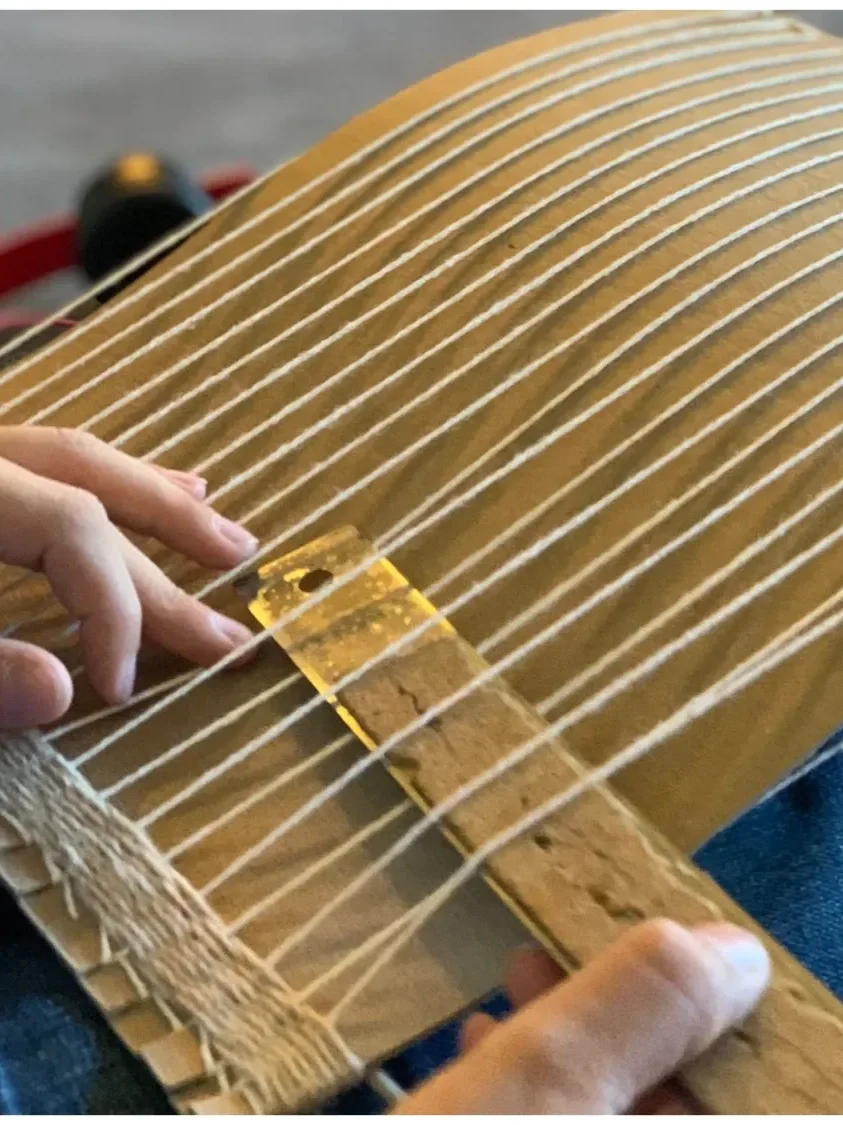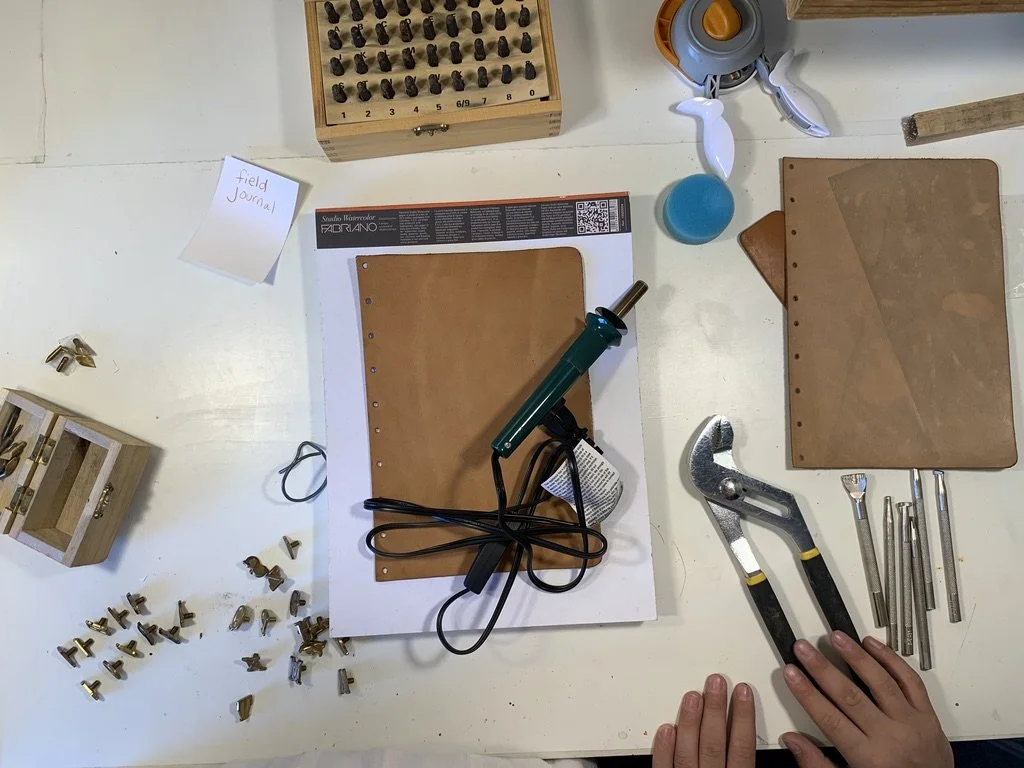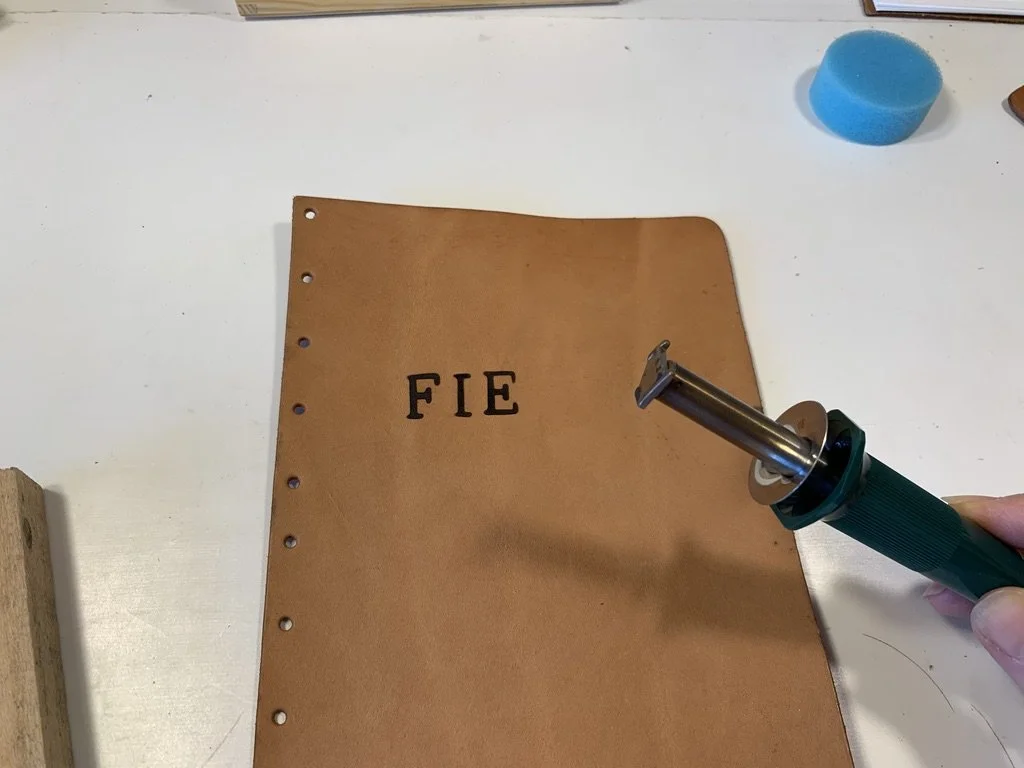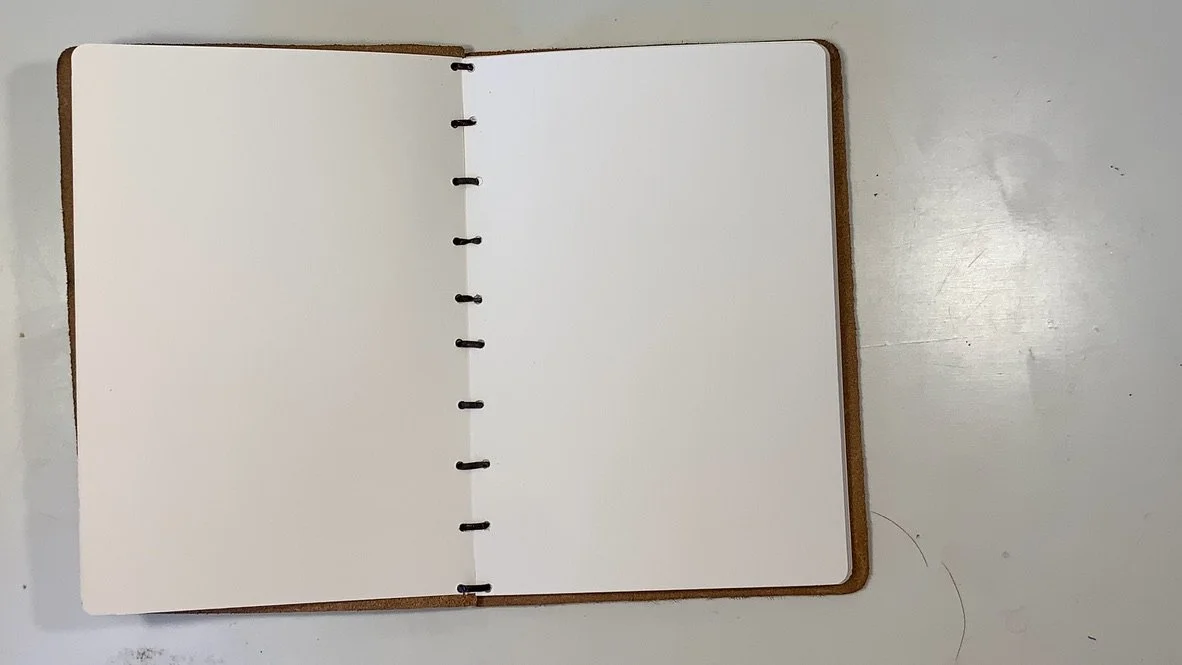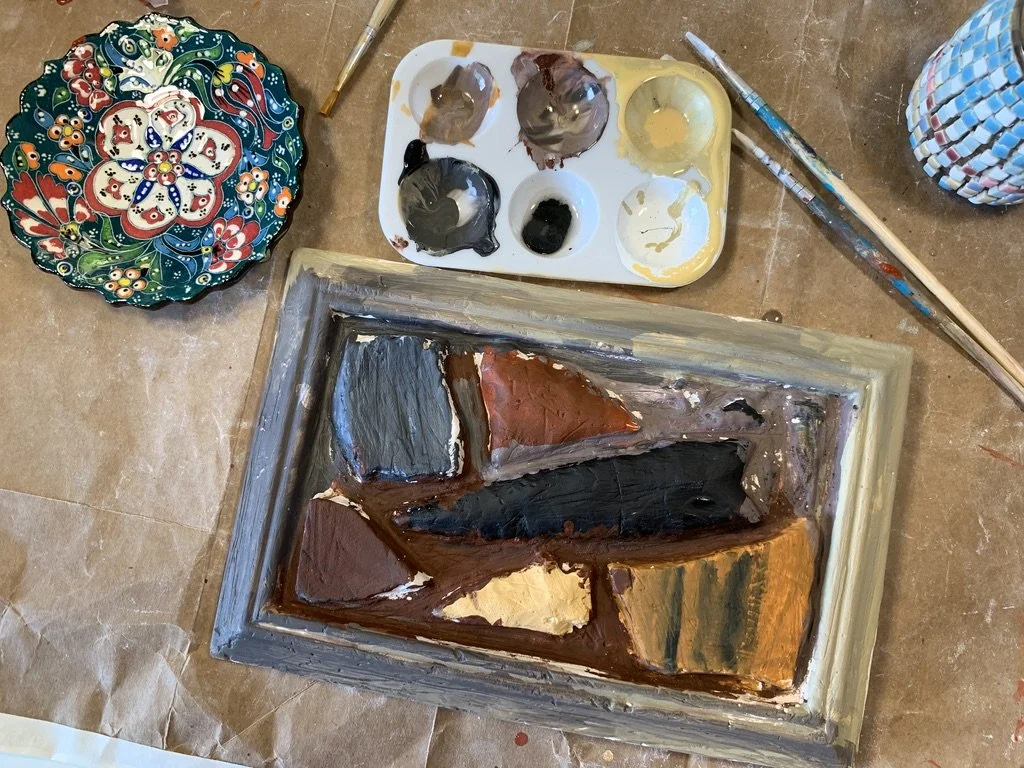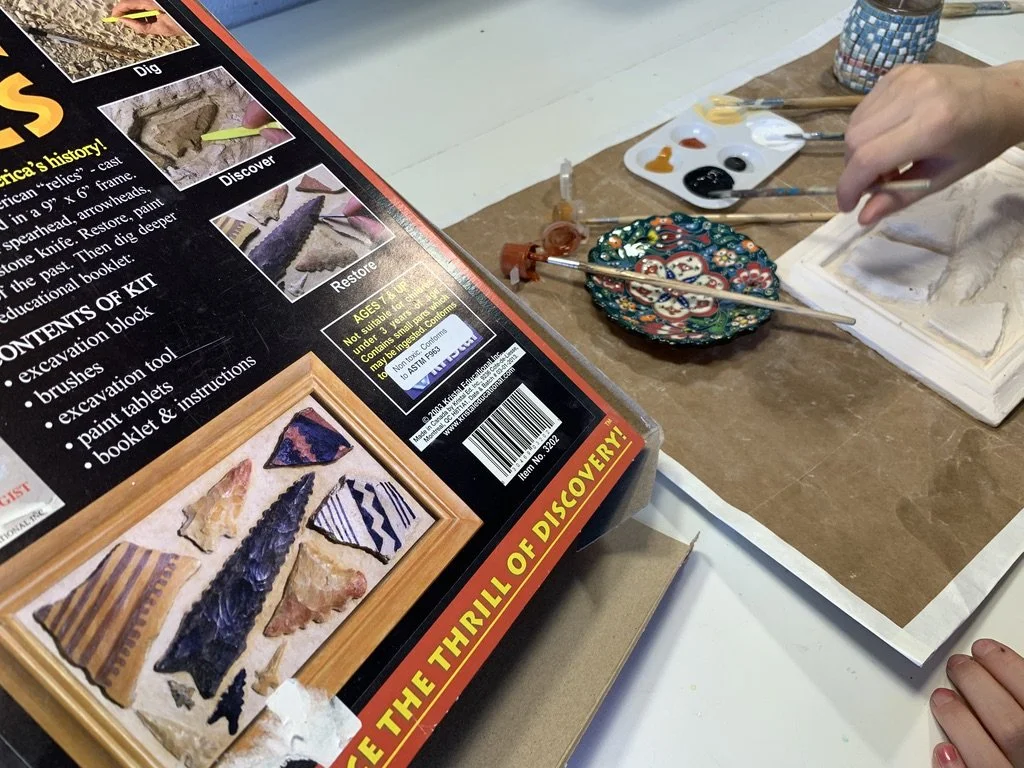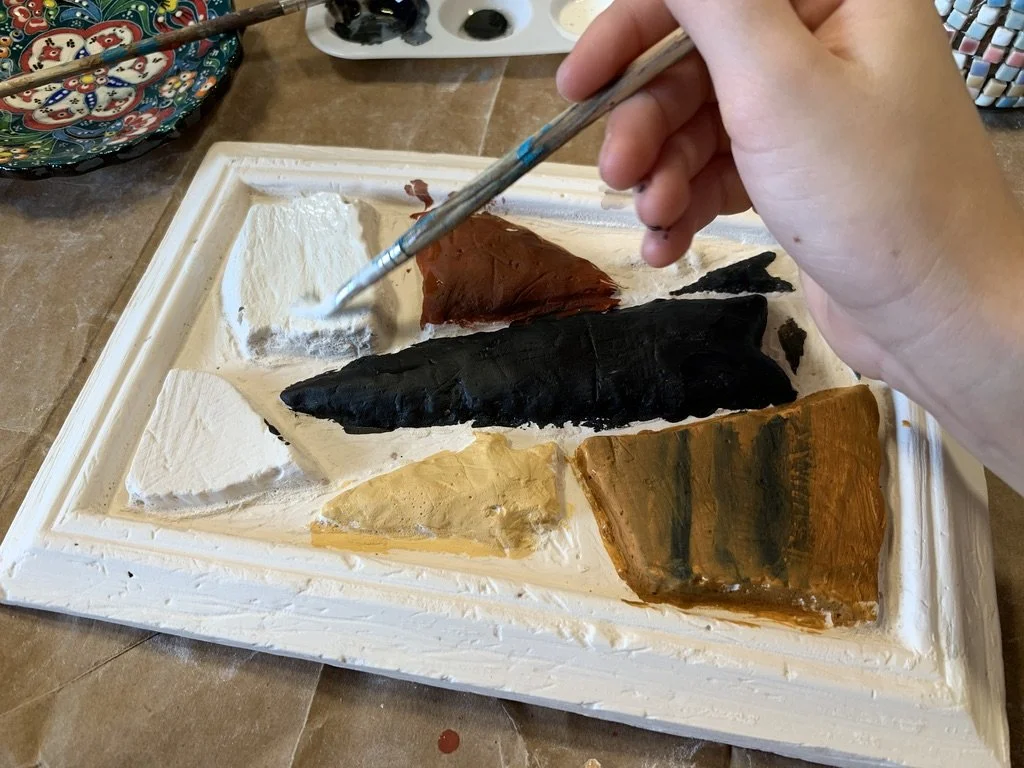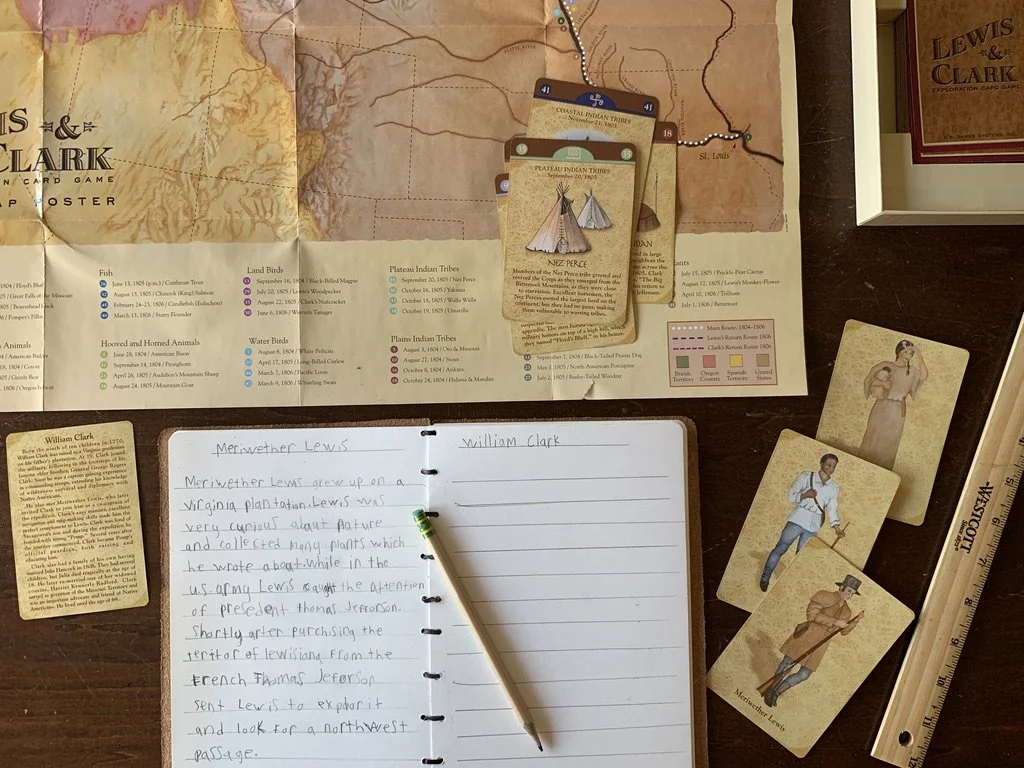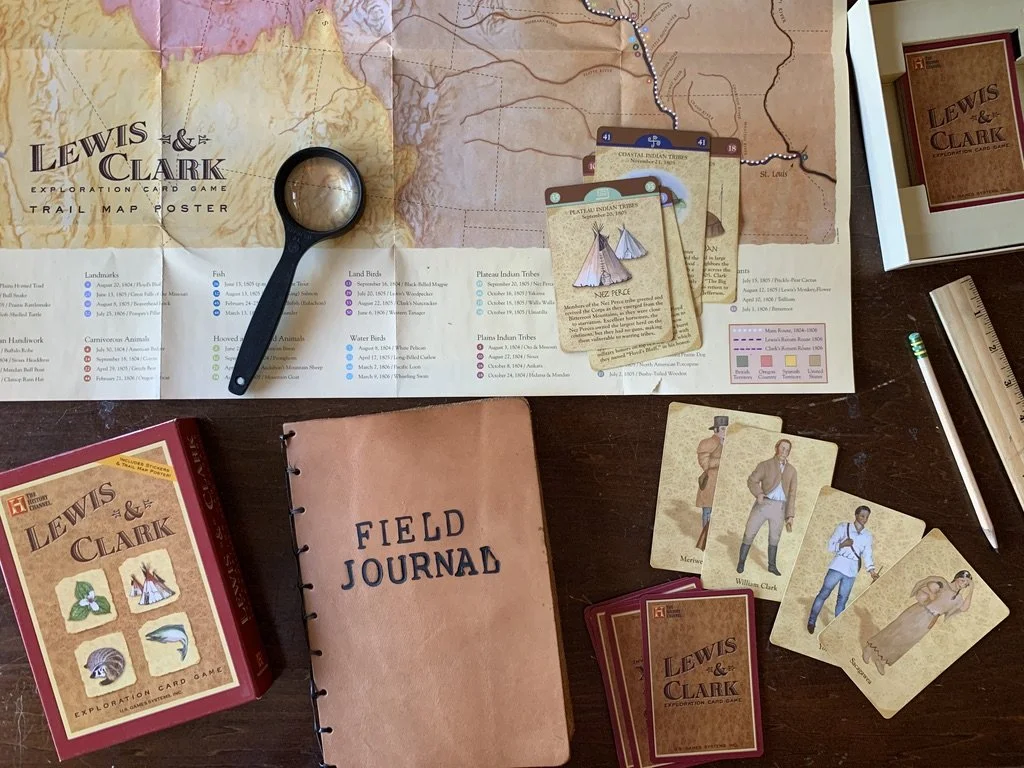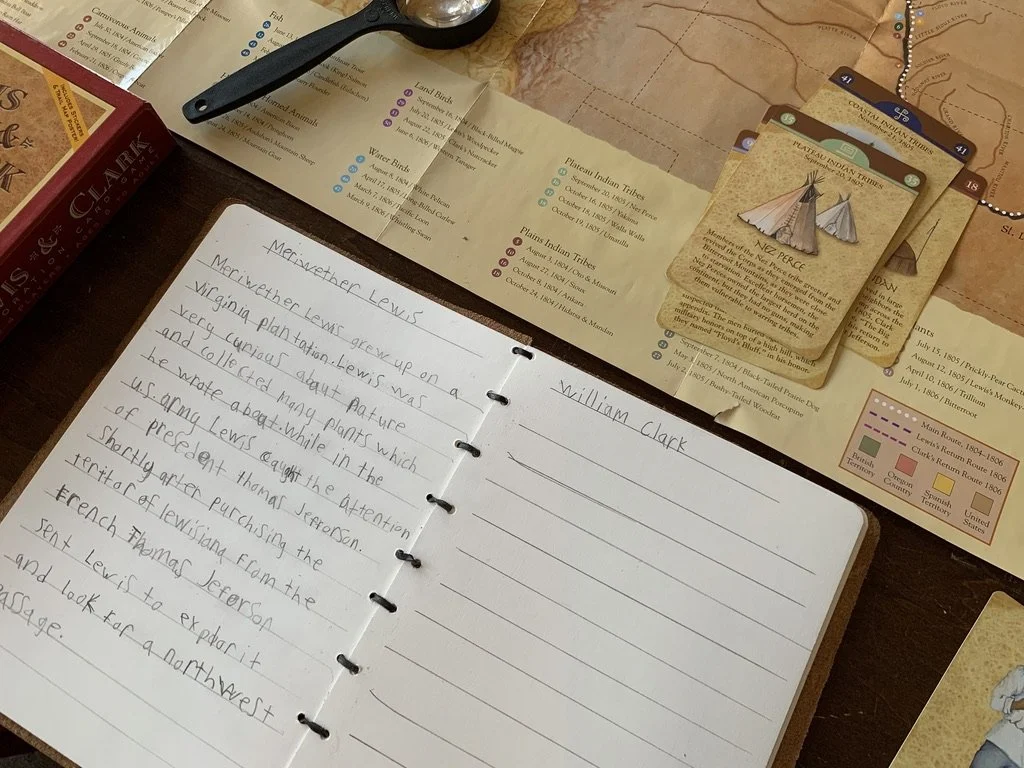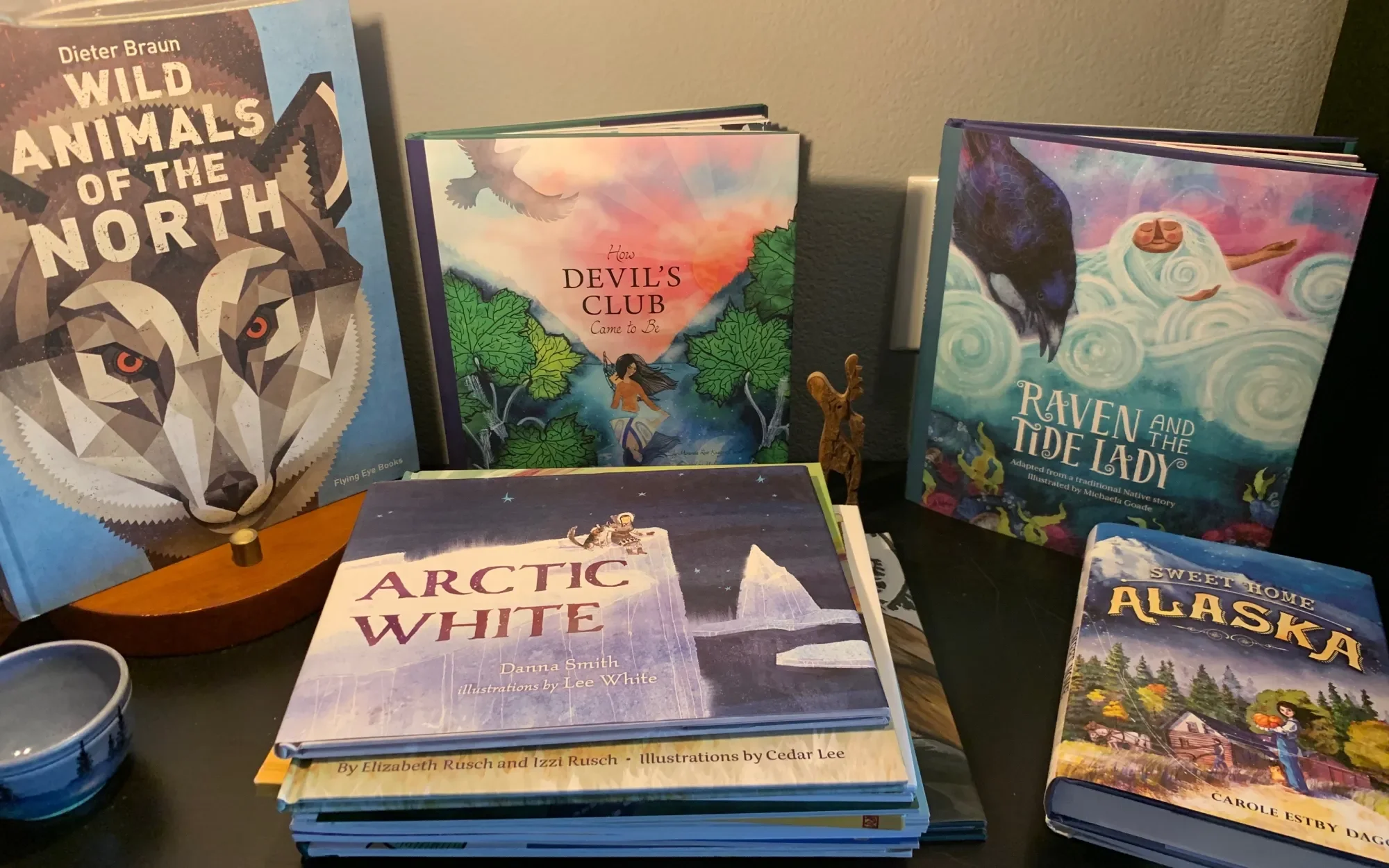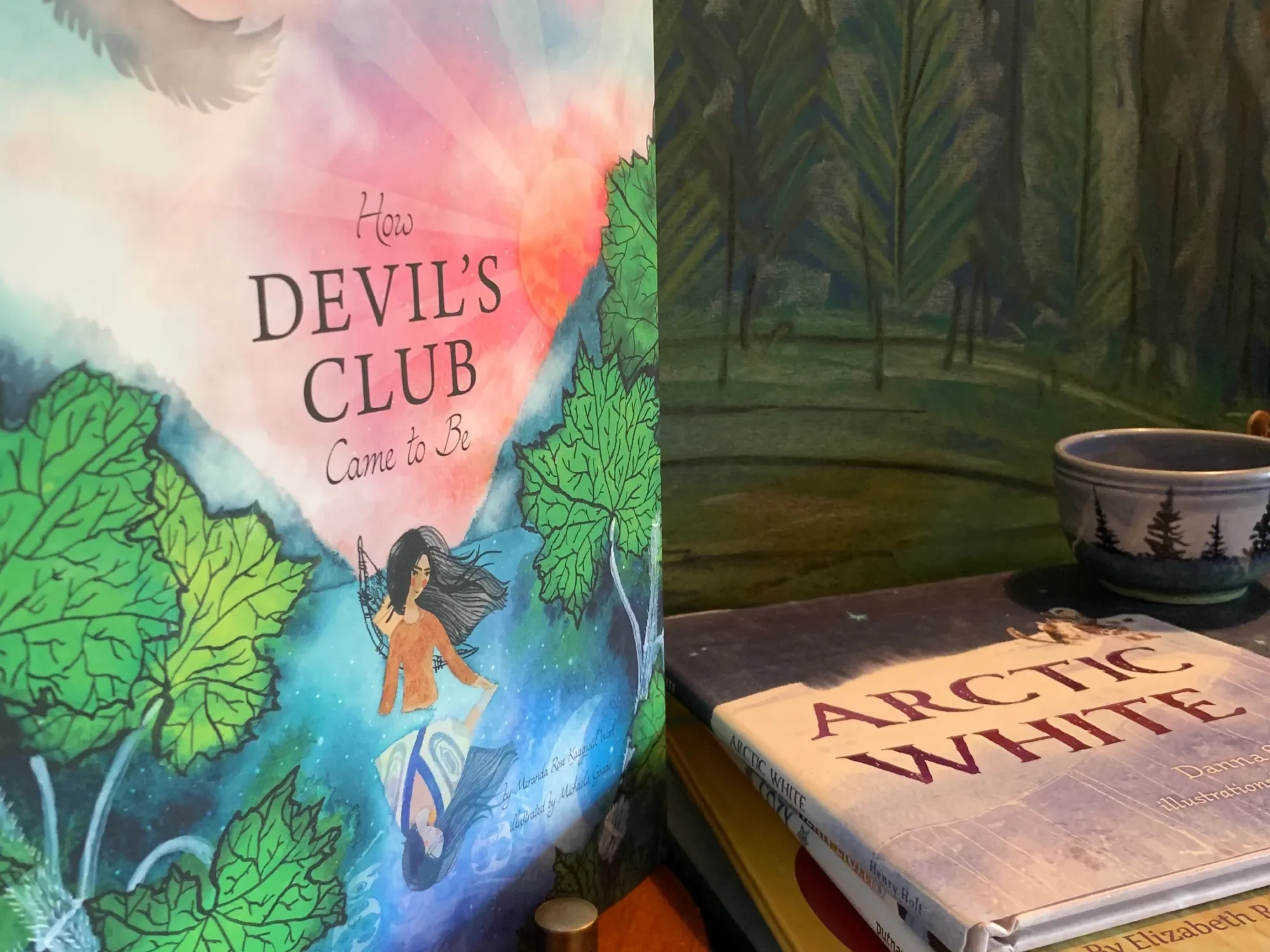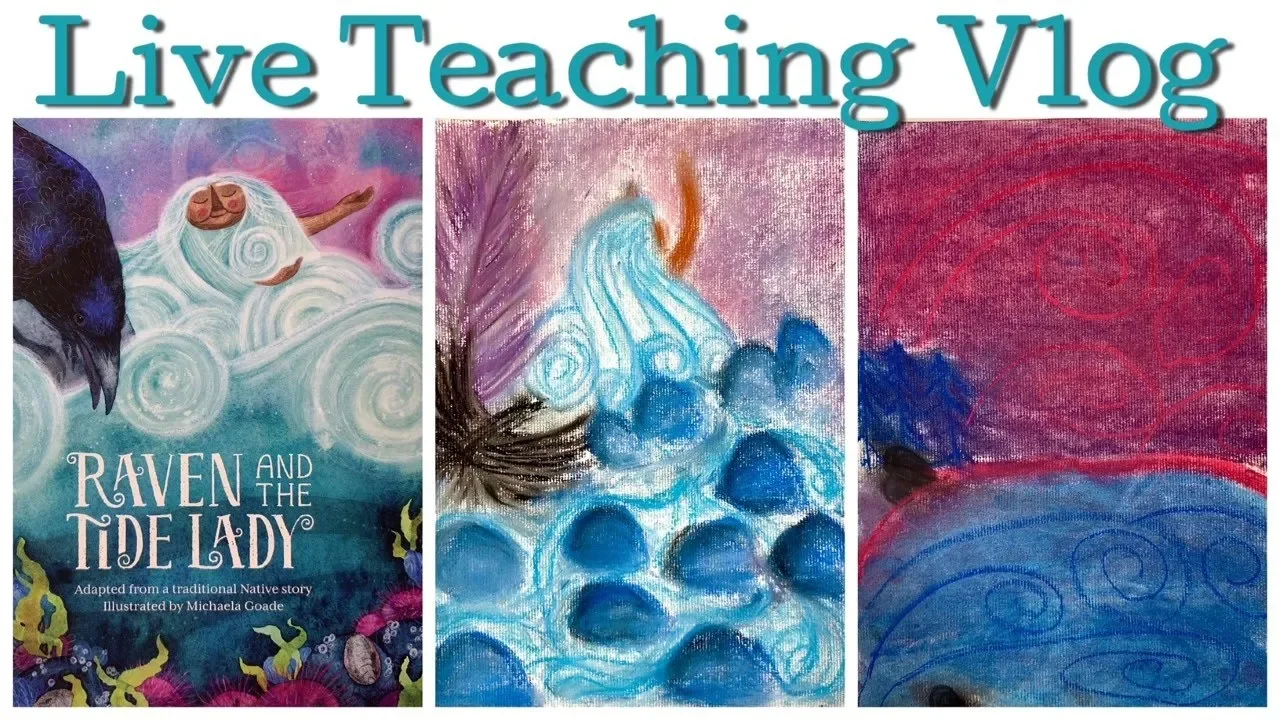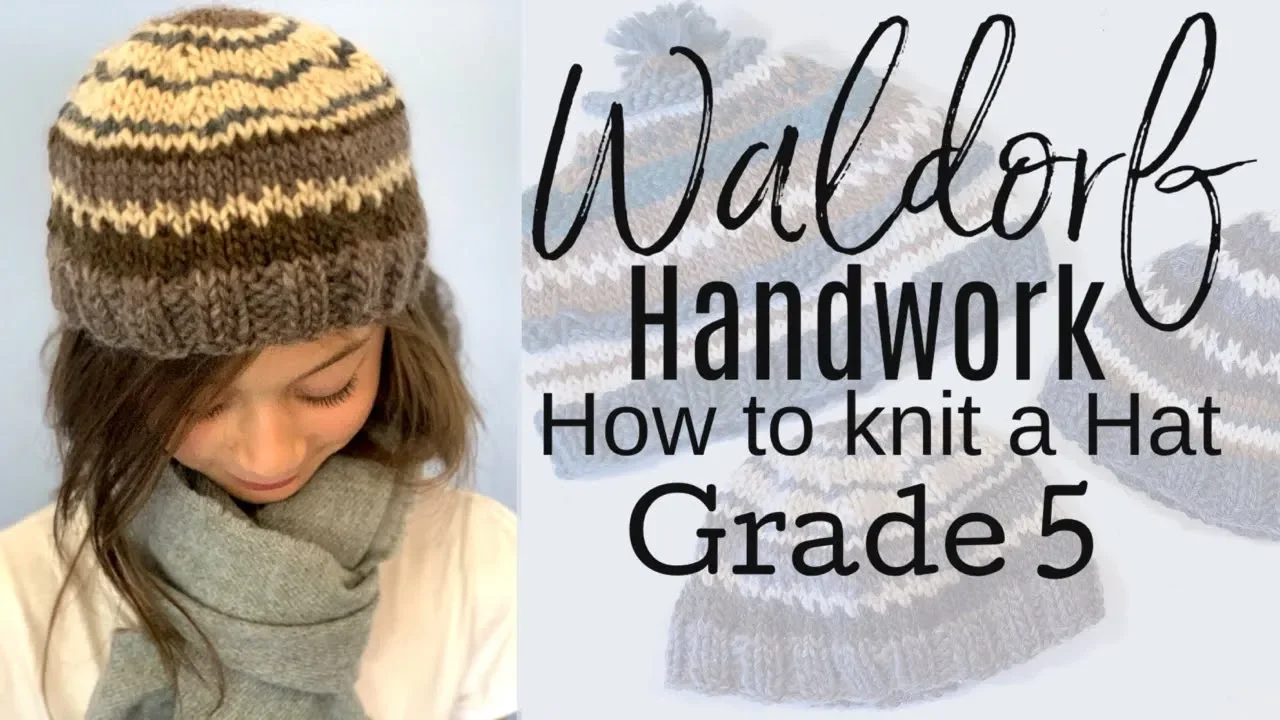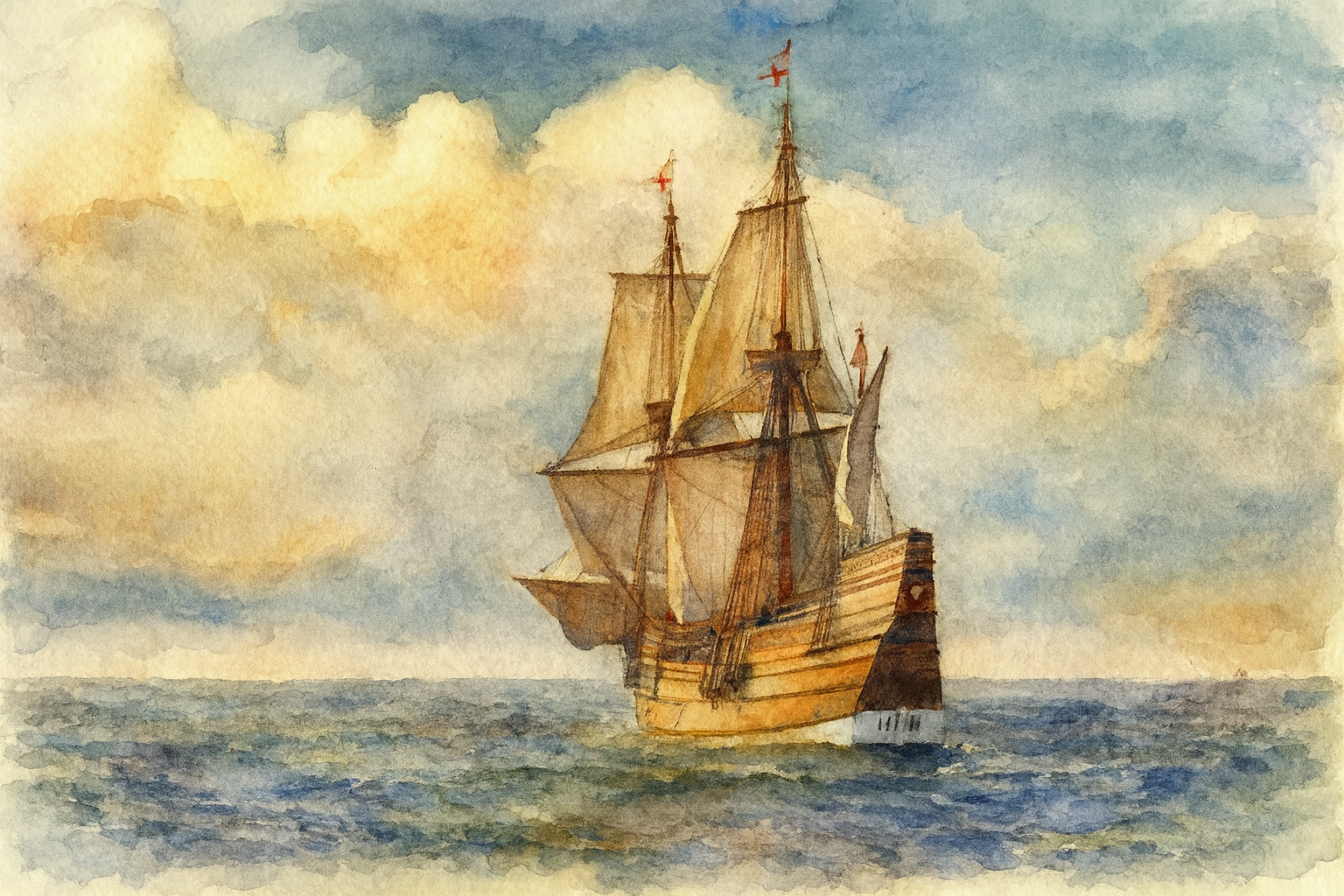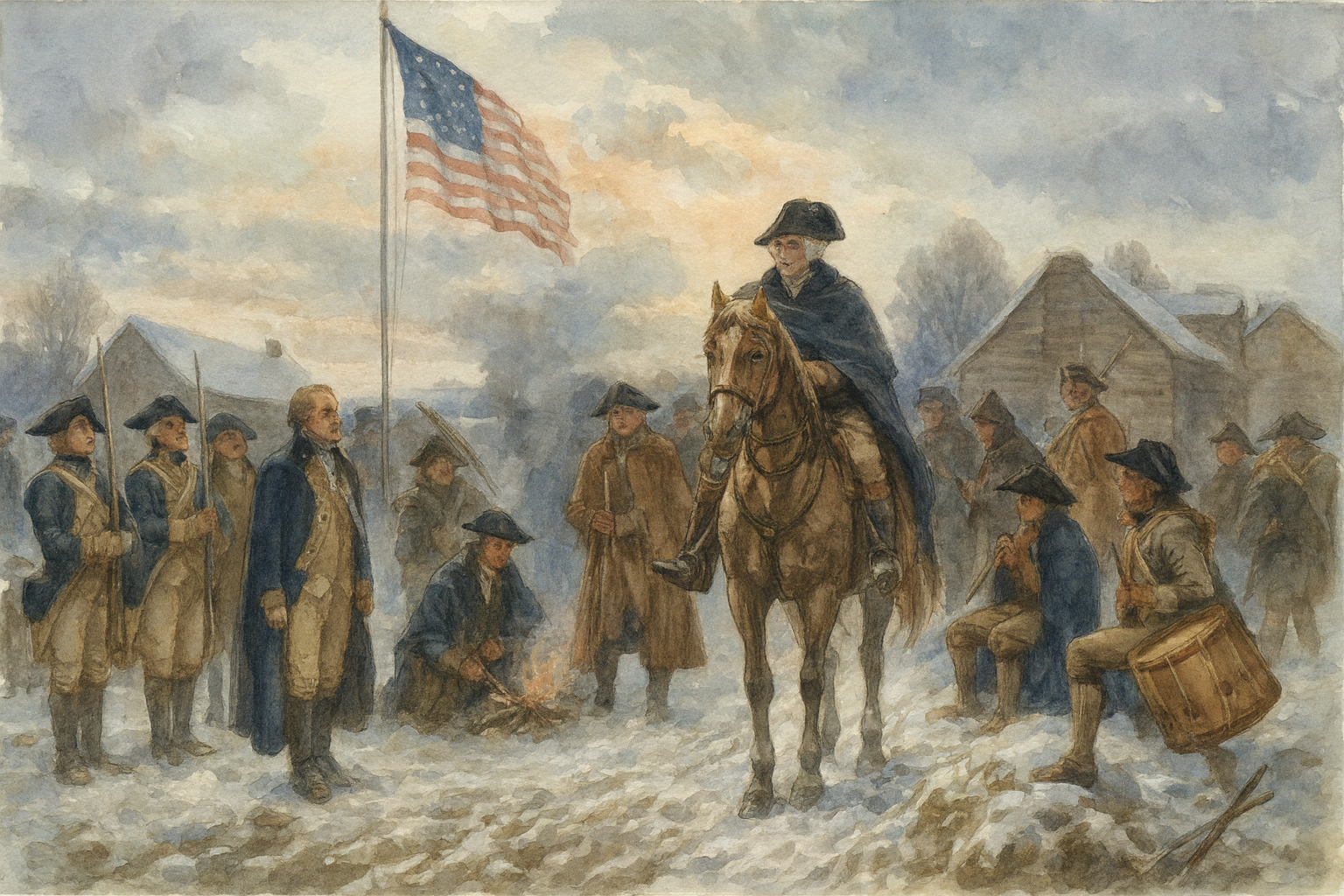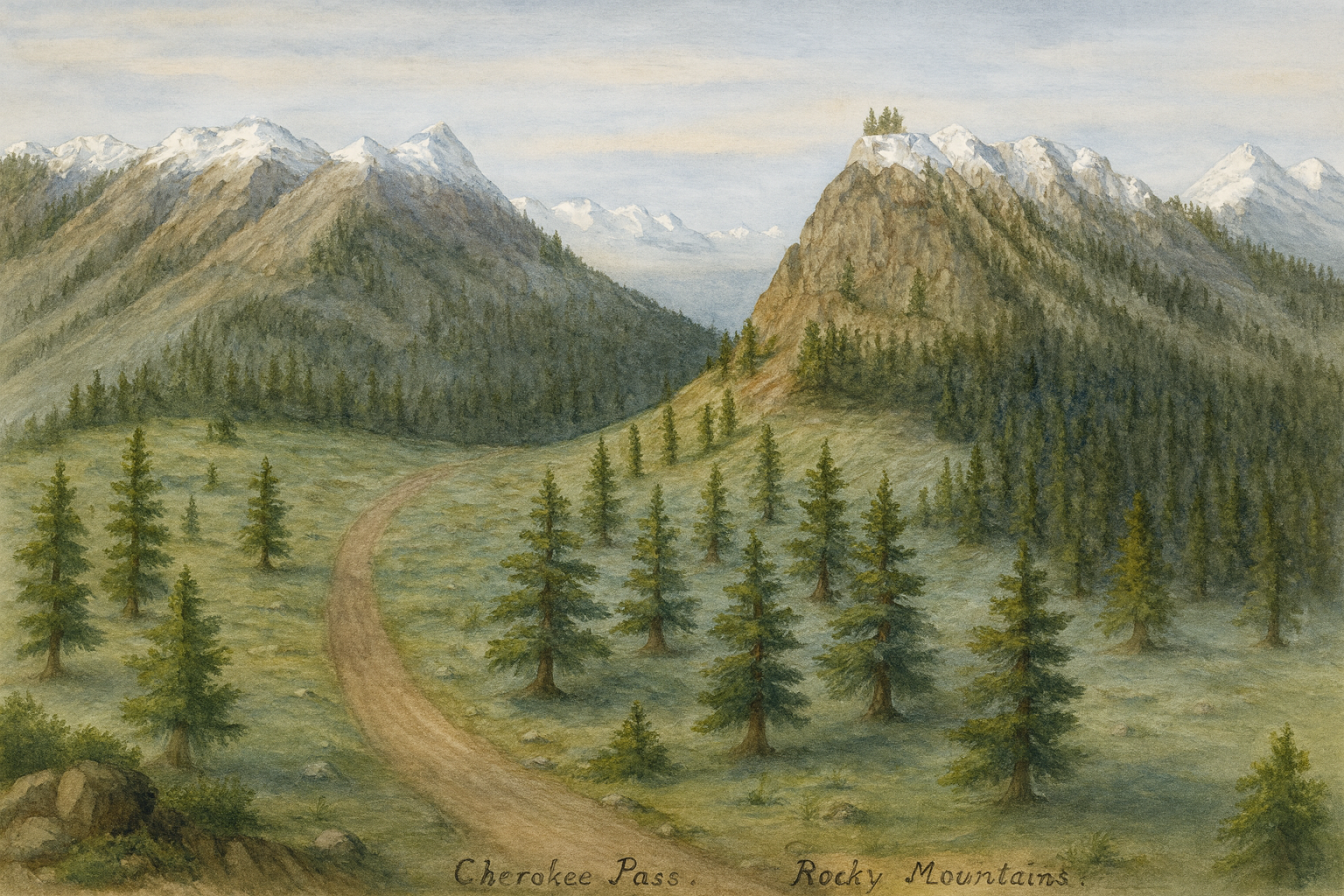
Lewis & Clark and The Western Movement
Lewis & Clark
When I started planning our American History units, I quickly found myself overwhelmed by the sheer volume of materials available. Everything looked to inviting and inspiring, and I did something I do often: I overbought and over planned. Then I had to read our way out of the massive pile of books I had purchased! We did…slowly and over many years.
First, in the following posts you can see what we bought and why. You also get to see how I put together our units, but more importantly, you get to see what worked, what didn’t work and what we didn’t get to. A curriculum haul is fun to watch. You get to see inside the books and projects and decide if you want those things for your own homeschool. But it’s not a review.
At the close of each unit, I record a unit study review in which I share the projects and activities we did and how we liked the books and resources we used. This is where you get to see whether those amazing resources were worth it or not. Since we have the ability to buy our homeschool material with educational funding, it’s okay if something doesn’t work out, but when you are on a budget, it’s important you find material that’s going to work best for your family. I aim to help with that as much as I can through my unit study videos and review videos. Often I’m surprised that material worked so well and other times I’m disappointed some books didn’t go over well.
Lewis & Clark and The Western Movement
-
Curriculum Haul | Lewis & Clark Expedition & Western Movement
Pulling together books for our American History Unit, I knew I wanted a substantial amount of material on the Lewis and Clark expedition. We did a the westward movement and Texas history back in 2012-2013 while living in Dallas for a year, and I really enjoyed learning about the Lewis and Clark expedition and wanted to expand on it this time around.
-
Homeschool Haul | Western Movement
The Westward Movement spans over 100 years in American History, so within this unit, there are other subunits: American Civil War, Lewis & Clark Expedition and California History & Gold Rush. Even so, I still have a lot of material, and may choose to split this unit up further.
-
Curriculum Material for Native American Unit Study
I debated whether I should have a separate unit for Native American because the stories and history of the Native Americans spans the whole history of the US. This is a small compilation of supplies that would stand alone as a unit, but what would be more authentic is to distribute these materials over all our other American History unit, as currently each unit only has a little bit of relevant Native American material.
-
Lewis and Clark Expedition
How do you build a unit study out of books? How do you feel confident putting the curriculum aside and diving into living books and hands on projects without feeling the pressure to hit state standards or succumb to peer pressure when you try something different? How do you make books the curriculum?!
-

Western Movement
While preparing for our next main lesson block, I came across materials I had pulled for a project to use during our Lewis and Clark Expedition and Western Movement Unit Study.
-
Excavation Kit | Discovering US Archaeological Relics
Dig Discover and Display kits come in all varieties. I mistaken called this one Indian Relics, when in fact it's Archaeology USA. We have been using these kits for years in our homeschool and my children enjoy them immensely.
-

DIY Loom | Weave a Bag
Weaving is one of those projects you need to dedicate yourself to. It takes time, perseverance and mindfulness. Weaving engages your mind and hands, and unlike knitting for instances, you can't easily take your eyes off your project.
-

How to Make a Pine Needle Basket
his is a great activity for a nature unit study or for an Indigenous People. It's fairly simple, but does take some practice or skill. What I did was get the project started out for my 10-year-old son who continued making it until the end, when I finished it off.
-
Leather Journal Tutorial
Making a journal can be easy and simple or spectacular and somewhat difficult. This is the easy version. It's the version where you don't need to fold or stitch. What this means is you can find more affordable options to make a journal.
-
Excavation Kit | Native American Relics
I'm guessing that by now, these kits by Krystal are hard to come by. Dig, Discover and Display Indian Relics is an excavation kit in which you excavate a frame of 'Native American Relics' that you paint once the frame is cleaned of dust and plaster.
-
Lewis and Clark Expedition and Western Movement Review
One of my favorite stories about the Western Movement is the story of Lewis and Clark. But in all honesty I'm less interested in Lewis and Clark and completely fascinated by Sacagawea. On multiple occasions she not only saved the expedition but saved the lives of the men of the expedition and throughout it all she was just a teenager!
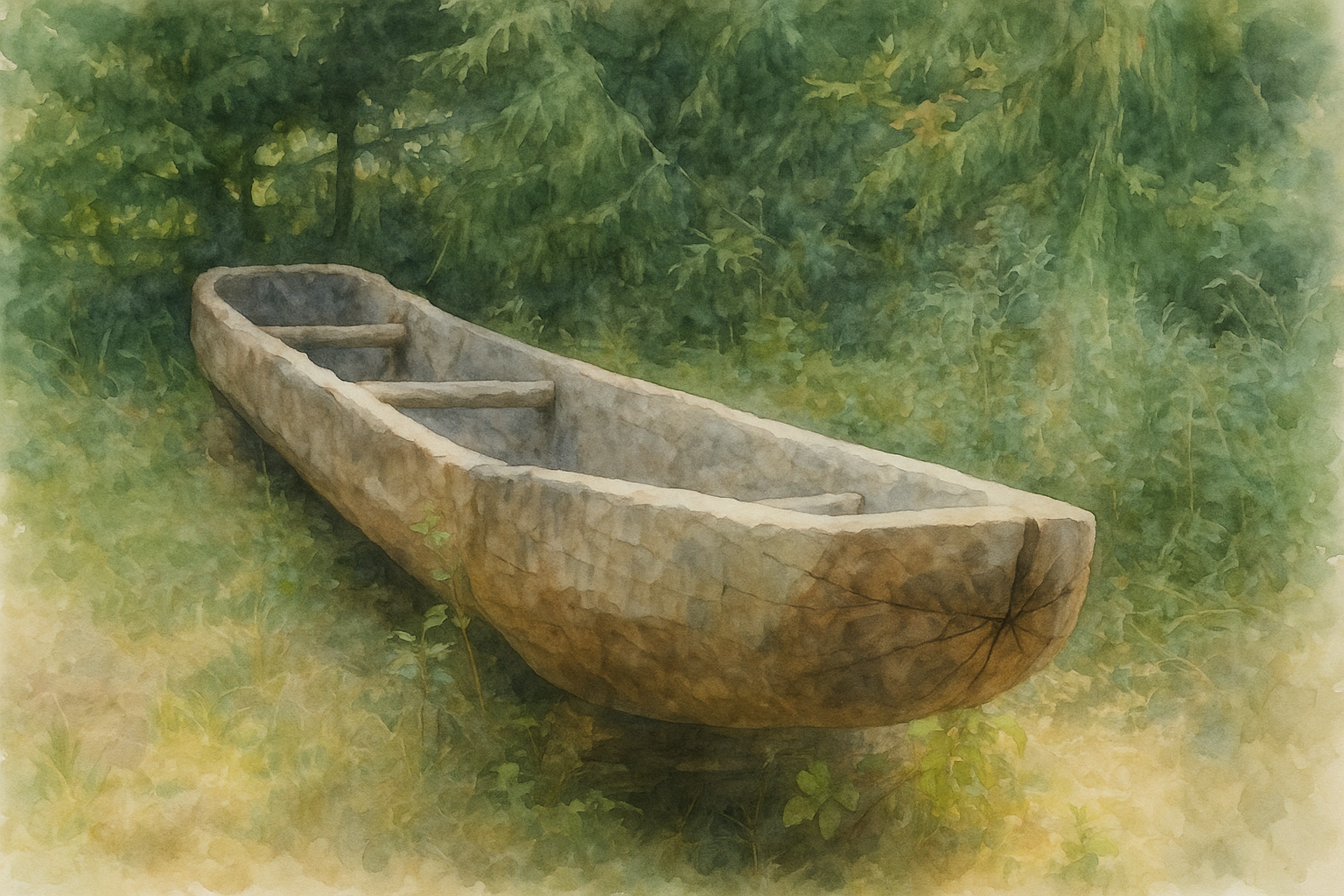
Lewis & Clark and The Western Movement
Curriculum Haul | Lewis & Clark Expedition & Western Movement | American History | Living Books
Pulling together books for our American History Unit, I knew I wanted a substantial amount of material on the Lewis and Clark expedition. We did a the westward movement and Texas history back in 2012-2013 while living in Dallas for a year, and I really enjoyed learning about the Lewis and Clark expedition and wanted to expand on it this time around.
While putting together history units, I aim to get books in the following areas: biographies, reference or resource books, cultural, geography (or climate and environment), mythology or religion, historical fiction, picture books and ‘actual’ history. And by actual history, I mean books that present important dates, events, and people. I also like to include field trips, hands-on projects and games whenever possible.
Don’t forget you can see the whole playlist, and I will be continuing to add to it as we do projects for each unit. I also plan to share the lesson plans and “How to put together an American history unit” on that playlist as the videos become available.
You can get the complete list of materials we are using for all our American History Units by click here or visiting my Teachers Pay Teachers page.
Homeschool Haul | Western Movement
The Westward Movement spans over 100 years in American History, so within this unit, there are other sub-units: American Civil War, Lewis & Clark Expedition and California History & Gold Rush. Even so, I still have a lot of material, and may choose to split this unit up further.
Most of my history units include historical fiction, picture books, history books, resource and reference books, project and activity books, specialty books (like cooking or reading comprehension), books on religion or mythology, workbooks, games, kits and toys.
This unit may not include all those areas, but as part of a larger American History unit, there will be adequate variety. Though this unit may only be 3-4 weeks, our American History units will span several months.
You can get the complete list of materials we are using for all our American History Units by click here or visiting my Teachers Pay Teachers page.
Curriculum Material for Native American Unit Study
I debated whether I should have a separate unit for Native American Indians because the stories and history of the Native Americans spans the whole history of the US. This is a small compilation of supplies that would stand alone as a unit, but what would be more authentic is to distribute these materials over all our other American History unit, as currently each unit only has a little bit of relevant Native American material.
While most of these supplies came from Rainbow Resource, there are a few books that were hand-me-down. Our Indian Fire Drill was purchased many years ago (possibly from a museum gift shop), but looks like something a crafter or woodworker could make. Don’t forget to check out the complete playlist!
You can get the complete list of materials we are using for all our American History Units by click here or visiting my Teachers Pay Teachers page.
Here’s a complete list of the materials we used for our Native American Unit:
The Native American Book of Knowledge by White Deer of Autumn
Book of information and mythology
Grade Level 3rd grade and up
Reading level 6th grade and up
Custer’s Fall: The Indian Side of the Story by David Humphrey’s Miller
Dense. 1800’s
Grade level: High school
Reading level: High School
In Their Own Words: Pocahontas by George Sullivan
With illustrations, 1600’s
Grade Level: 2nd grade and up
Reading level: 5th grade and up
North American Indians by Marie and Douglas Gorsline
Picture book, nice illustrations
Grade level: KG and up
Reading level: 5th grade and up
Picture book, legend
Grade Level: KG and up
Reading Level: 6th grade and up
Explore Native American Cultures! By Anita Yasuda
Project and activity book. 25 projects. Includes information, vocabulary and activities with supplies list
Grade Level: 1st and up
Reading Level: 4th grade
Resource book
Grade level: 4th and up
Reading level 7th and up
North American Indian Tales by W.T. Larnerd
Picture book
Grade level: KG and up
Reading level: 4th and up
If you lived with Indians of the Northwest Coast by Anne Kamma
Easy read, lightly illustrated
Grade level: KG and up
Reading level: 5th and up
If you lived with Sioux Indians by Anne McGovern
Easy read, lightly illustrated
Grade level: KG and up
Reading level: 5th and up
Historical Fiction:
American Indians:
Remember My Name by Sara Banks
Female main character
Grade level 2nd grade and up
Reading level 6th grade and up
Kitaq Goes Ice Fishing by Margaret Nicolai
Picture Book, beautifully illustrated
Grade level: KG and up
Reading Level 5th grade and up
Island of the Blue Dolphin by Scott O’Dell
California, Indians, girl
Grade level: 2nd and up
Reading level: 5th grade and up
Boy Book of Indian Warriors and Heroic Women by Edwin Sabin
Grade level: 5th and up
Reading level 7th and up
Indian in the Cupboard by Lynne Reid Banks
Grade level: 2nd and up
Reading level: 5th and up
Moho Wat: Sheepherder boy attempts a rescue by Kenneth Thomasma
Grade level: 2nd and up
Reading level: 5th and up
Kunu: Winnebago boy Escapes by Kenneth Thomasma
Grade level: 2nd and up
Reading level: 5th and up
Moccasin Trail by Eloise Jarvis McGraw
Grade level: 4th and up
Reading level 6th and up
Activity Books/Supplements:
American Indians:
More Than Moccasins Activity Book by Lauri Carlson
Grade level: 2nd and up
Reading level 5th and up
Games and Pretend Play:
American Indians:
Dig, Discover and Display: Indian Relics
Grades 4th and up
Easy to make Indian Teepee village
Cut apart book
Grade level: 2nd and up
Cut apart book to make Pueblo Village
Grade level 2nd and up
Leather material to make headband
Audio CDs:
American Indian:
Audio CD-Native American Heroes
Games and Pretend Play:
Cowboys and Indians:
Wild West Mounted Cowboys and Indians
Plastic figures-pretend play
Grade level: KG and up
Plastic figures
Grade level: KG and up
Jumbo Wild West Cowboys and Indians Play Set
Plastic figurines playset
Grade level: KG and up
Wild West Cowboys and Indians Battle Bucket
Plastic figurines playset
Grade level: KG and up
Lewis and Clark Expedition
How do you build a unit study out of books? How do you feel confident putting the curriculum aside and diving into living books and hands on projects without feeling the pressure to hit state standards or succumb to peer pressure when you try something different? How do you make books the curriculum?!
For years, we’ve been collecting books and resources to create our own unit studies and Waldorf inspired main lesson blocks. It’s simple, but not easy. I’ll show you the books I’m using and how we intend to use them. When putting together a unit, I look for a variety of resources. I look for kits and books first. I love hands on projects and I love it even more when they come in a kit rather than instructions in a book after which I need to source the material. I look for books to meet a variety of needs: various ages or grades, various interests and ability and of course various topics to support the unit.
What this looks like is books on the following topics:
An actual history book: you don’t always need this, but anchoring your unit with some dates, locations, geography and people is a helpful way to get the unit going and inspire other topics within the unit. Afterall, we are still learning too and a general book is an informative start.
Biographies: I love the Who Was book series because they are easy to read, simplified, but not dumbed down and lightly illustrated, but any biography will do. I also like the David Adler books because they are picture books which are packed with just the right amount of content to appeal to a young student all the way through middle school.
Cookbooks: Odd but true. I look for cookbooks or recipes to accompany as many units as it’s feasible. History and geography units are the easiest to find cookbooks for, but you can certainly get creative with science, math and language arts units. I love getting in the kitchen with our units. It’s usually a festive time that’s special for the kids. Sometimes recipes become family favorites we have often.
Activity Books: These are almost a must have for our units. I can’t think of a unit where we didn’t have at least one hands on project per week and often even more. I truly believe in the educational benefit of hands on activities as a means of deep and memorable learning. What I like even more than activity books are activity kits!
Kits and Projects: I’m always impressed with what is available as far as kits and projects are concerned. You can find all sorts of kits at your local craft store and online. I love browsing them and then deciding which ones I can make on my own and which ones I will buy.
Games: We use games as our opening activities. I often use them as transition activities to inspire my children into the new learning for the day or a way to break up some of the lessons that are not as desirable. Afterall, we still need to read, write and do math everyday and sometimes the proficiency lessons are not exciting. Games bring us together, bring a fun lightheartedness to the lessons and improves our understanding of the lessons. The are a win all around.
Games: We use games as our opening activities. I often use them as transition activities to inspire my children into the new learning for the day or a way to break up some of the lessons that are not as desirable. Afterall, we still need to read, write and do math everyday and sometimes the proficiency lessons are not exciting. Games bring us together, bring a fun lightheartedness to the lessons and improves our understanding of the lessons. The are a win all around.
Picture books: I truly believe that picture books are overlooked as educational books. They are a rich resource that I feel is undervalued and underestimated. Here’s why I love picture books. The illustrations! I love looking at the beautifully illustrated pages and often choose books just for their magnificent artwork. Because even if the book ends up being less than expected, if the illustrations are wonderful, you can always tell your own version of the book. I find picture books are great for all ages from toddler through middle school. Picture books invite your students to sit close. Picture books are written in a way that makes understanding big topics in a simple way, but not dumbed down. I find I learn a lot from a well-written picture book.
Historical Fiction: We all love a good story and it just so happens that history is rich with good stories. Historical fictions take the reader deep into history by means of characters who are fictionalized but set in real historical settings. I have learned the most from historical fiction because the stories stick! They often bring history to life and bring an emotional aspect that connects the student to history. However, this is an area I’ve gotten the most hits and misses. Sometimes a historical fiction is just wonderful and other times it’s a real miss and that’s so disappointing.
Western Movement
While preparing for our next main lesson block, I came across materials I had pulled for a project to use during our Lewis and Clark Expedition and Western Movement Unit Study.
It was leather from a kit I bought years ago I thought would work perfectly for this unit. I thought my 13-year-old could use our leather stamping kit and decorate the front, then fill it with pages of homemade paper we made last year.
Instead, I pulled out our wood burning tools and helped him label the front of his journal (swipe to see pic). It turned out awesome! I didn’t think to use our wood burning tools on anything other than wood before, so I was exceedingly pleased with the way it turned out.
Since he was going to use this journal as a main lesson book for this unit, we opted to use high quality watercolor paper rather than our homemade paper which is more difficult to write on. I’m so glad we did. The finished journal looks authentic and rustic and best of all, it’s useable!
For his entries, he’s using the History Channel’s Lewis and Clark card game which comes with beautifully printed cards showcasing the wildlife and native tribes along the expedition’s route. His journal is being filled fast with beautiful illustrations and narrations. Of all the projects we’ve done for these three history units (colonial times, American Revolution and Western Movement) this is my favorite. And I think it’s his favorite too ❤️
I can’t remember where the kit was from, but I think it’s from @rainbowresource .
Our wood burning tool and letters were from Michael’s Craft store. We used 140 lb. hot press watercolor paper by Fabriano available at Blick.
Excavation Kit | Discovering US Archaeological Relics
Dig Discover and Display kits come in all varieties. I mistaken called this one Indian Relics, when in fact it’s Archaeology USA. We have been using these kits for years in our homeschool and my children enjoy them immensely. We have used them for many of our history kits and again this time we are using them for our American history units which this fall included Colonial Times, American Revolution and the Lewis and Clark expedition. While these kits may be hard to find now, you can make your own! With a large silicone mold, some plaster of Paris and some artifacts (Indian arrowhead or reproductions), you can create your own exciting archaeological dig!
DIY Loom | Weave a Bag
Weaving is one of those projects you need to dedicate yourself to. It takes time, perseverance and mindfulness. Weaving engages your mind and hands, and unlike knitting for instances, you can’t easily take your eyes off your project. Weaving in found in the Waldorf curriculum starting at grade 3. It complements the the block on shelter, farming and clothing. With a bit of effort, you can actually weave fabric and potentially make your own rudimentary clothes!
In this project, however, we are weaving a bag. With a bit more effort, you can optimize your weaving time and create a bag rather than a solid piece of fabric.
For this project, we are making our own DIY loom out of heavy cardboard or chipboard. I’m using chipboard from the backing of a watercolor paper pad. It’s thick and difficult to bend which is just what we want. The piece I’m using is 9″x12″. Along the top and bottom (9 inch side), I’m marking 1/2 inch increments. You can make your increments smaller for a tighter weave or larger for a looser weave. One thing to make sure of though, is that your last increment is as close to the edge of the chipboard as possible. If not, trim the chipboard because otherwise in the end, you’ll end up with a large bit of unwoven yarn on either end of the project. It doesn’t affect the project, but it’ll be noticeable. If you look closely, you can see if in the correct project with teal colored bulky weight yarn. Make sure you have an odd number of increments/strings otherwise you won’t have the opportunity to go over/under in an alternating pattern to create a proper weave. Once your increments are set, it’s time to string up your loom. In this case, I made a mistake.
I’ve shown you my mistake in the video and how I remedied the problem, but I also show you the correct way to do it. When weaving a bag, you want an opening! Do do this you need to string your loom so that the string goes around alternating tabs and comes down the same side before circling back up the other side in which you just string it up without wrapping it along the tab. This is very confusing at first! It took me a lot of practice and there are still times I do it wrong. Truthfully, there are a few ways to do this, and I’ve now done this about 4 different ways depending on the projects and sadly, one time, it was very wrong and this is the time you get to see! In the end, we found an alternative way to fix our mistake, and while it’s not perfect, it works. I debated showing you the mistake, but in the end, with your suggestions, I showed the mistake in a way I hope isn’t confusing to the tutorial. I’m pleased with finding a solution to our problem even though it took so much time to fix. In the end, you can hardly tell and it salvaged weeks of work. Imagine starting over!! We used yarn from Harrisville Designs as well as some home dyed yarn using natural materials like onions skins and tea. The yarn dyeing and weaving accompany our American History units by adding in Waldorf inspired handwork. I love having the opportunity to tailor our lessons to appeal to my child’s interests and still work within the Waldorf Education philosophy. We initially used some tools that came in the Harrisville Designs Loom Kit, but ultimately, this was completely DIY.
My 8-year-old daughter worked on the Harrisville Design loom to make her project, while my 13-year-old son worked on the DIY loom to make a bag using a ruler to separate the string and a popsicle stick as a shuttle. This project is fast at first and you can complete 90% of it fairly quickly. The last part is challenging because the space is so tight. I helped with that part using a knitting needle with a sharp point and a wide eye to fight the yarn. I also helped make the twizzle with my son (which is the handle) and sewed it in for him, though these are things he’s capable of doing at his age. He chose the pattern which was just an alternating of colors starting with wider bands at the bottom and tighter bands at the top. To keep in line with Waldorf philosophy, you’ll want to be mindful to use darker colors at the bottom and lighter at the top where it opens. Also if there is an embroidery design on top of the weaving, you’ll want to ensure that the bottom of the design is closed and the top open. In our case, I feel that the tighter bands would have been more appropriate at the bottom versus the top. Something to consider when you are embarking on your project!
How to Make a Pine Needle Basket for Beginners
For our Botany Main Lesson block, we studied conifers. As part of the lesson activities we decided to weave pine needle baskets. This is a great activity for a nature unit study or for an Indigenous People. It’s fairly simple, but does take some practice or skill. What I did was get the project started out for my 10-year-old son who continued making it until the end, when I finished it off. We made a small flat basket with a small lip. If you work with a larger bundle of pine needles, it was be faster and easier, especially for kids.
I would recommend using a blunt wide eyed needle for this project. You can find raffia online or in craft stores. Pine needles are free! But I recommend using the long pine needles. If you can’t find them in nature, you can buy them as a basket weaving kit from Acorn Naturalist. This project is ideal for kids 12 years and up, but with a little help, you can assist a child as young at eight years old.
June 2017
Book Binding
Bookbinding in the Waldorf high school curriculum introduces students to the quiet, methodical art of making a book from start to finish. Beginning with folded signatures, students sew, glue, and press the pages, then construct the covers from sturdy materials like book board and cloth or decorative paper. This process invites mindfulness, precision, and care, as the finished book becomes a vessel for future thoughts, artwork, or studies. The rhythmic and structured nature of bookbinding offers a balance to the more expressive or chaotic elements of adolescence, grounding students in form and function.
Making a journal can be easy and simple or spectacular and somewhat difficult. This is the easy version. It's the version where you don't need to fold or stitch. What this means is you can find more affordable options to make a journal. We happened to get the leather from a leather kit which included other projects, but I've since sourced leather for new journals which is softer and easier to use for binding and folding and stitching.
This one was bound on one side with leather string that came in our kit. We had tools from the kit as well as our own materials. We used some scrapbooking tools to punch holes in our paper to match the holes in the leather. It's an eyelet tool and I highly recommend an eyelet tool maker because we can get different attachment heads for holes of various sizes. Otherwise you are stuck using a standard hole punch size which is larger than these holes.
We considered using our homemade paper, but opted for drawing paper and I'm so glad we made that decision. In the end, the paper was smooth and thin enough for my son to use for his drawings and narrations.
One thing I'm super proud of is our experimenting with our wood burning tool. I love the way it turned out! This is one thing I did for my son because I'm more practiced and there were no do-overs. I had no other leather at the time of this project and I knew my son would be disappointed if he messed up. I practiced on a piece of wood because leather does not need the same pressure or time, and since I didn't have spare leather, I practiced with wood. Once I mastered the pressure, I burned the words "Field Journal" but messed up on the final letter!
This is our favorite project for this unit! I'm so pleased with the way it turned out and what's even better, my 13-year-old son used it as his main lesson book for this unit.
Excavation Kit | Native American Relics
Bookbinding in the Waldorf high school curriculum introduces students to the quiet, methodical art of making a book from start to finish. Beginning with folded signatures, students sew, glue, and press the pages, then construct the covers from sturdy materials like book board and cloth or decorative paper. This process invites mindfulness, precision, and care, as the finished book becomes a vessel for future thoughts, artwork, or studies. The rhythmic and structured nature of bookbinding offers a balance to the more expressive or chaotic elements of adolescence, grounding students in form and function.
Making a journal can be easy and simple or spectacular and somewhat difficult. This is the easy version. It's the version where you don't need to fold or stitch. What this means is you can find more affordable options to make a journal. We happened to get the leather from a leather kit which included other projects, but I've since sourced leather for new journals which is softer and easier to use for binding and folding and stitching.
This one was bound on one side with leather string that came in our kit. We had tools from the kit as well as our own materials. We used some scrapbooking tools to punch holes in our paper to match the holes in the leather. It's an eyelet tool and I highly recommend an eyelet tool maker because we can get different attachment heads for holes of various sizes. Otherwise you are stuck using a standard hole punch size which is larger than these holes.
We considered using our homemade paper, but opted for drawing paper and I'm so glad we made that decision. In the end, the paper was smooth and thin enough for my son to use for his drawings and narrations.
One thing I'm super proud of is our experimenting with our wood burning tool. I love the way it turned out! This is one thing I did for my son because I'm more practiced and there were no do-overs. I had no other leather at the time of this project and I knew my son would be disappointed if he messed up. I practiced on a piece of wood because leather does not need the same pressure or time, and since I didn't have spare leather, I practiced with wood. Once I mastered the pressure, I burned the words "Field Journal" but messed up on the final letter!
This is our favorite project for this unit! I'm so pleased with the way it turned out and what's even better, my 13-year-old son used it as his main lesson book for this unit.
Lewis and Clark Expedition and Western Movement Review
One of my favorite stories about the Western Movement is the story of Lewis and Clark. But in all honesty I’m less interested in Lewis and Clark and completely fascinated by Sacagawea. On multiple occasions she not only saved the expedition but saved the lives of the men of the expedition and throughout it all she was just a teenager! Her heroism, feminism and quick thinking are only seen when you read between the lines of the Lewis and Clark journal or most work written about it. What angers me the most about it all is that she’s never named! She’s referred to as woman or wife but not by her name! And what’s more is that Clark asks for her son when the expedition is over. As she truly cherished her son and the men of the expedition, she willingly gave her son to William Clark to raise him. Jean Baptiste was finely educated and I’m guessing she chose to let Clark raise him in the hopes that he could provide a life she couldn’t.
There are some materials we’ve used before for this unit and other materials which are new. We also left a number of resources on our shelves because this was a smallish unit and we wanted to complete it in a week. We actually did pretty well and read through everything we set out to read except a historical fiction. One book I was exceedingly and surprisingly pleased with was Bewildered for Three Days. It’s a fantastic picture book about Daniel Boone and I highly recommend you check out that book.
Alaska
While most of our units include far more diversity in the types of books and topics we cover, this unit is simply a collection of books that we plan to read. There are many projects and hands on activities you could do with a winter unit or Alaska unit, but we are currently keeping it simple with just read alouds I’ll read to my 9-year-old daughter and my 14-year-old son. One project you could do is some handwork. Handwork and knitting especially lend themselves well to winter units and wintertime in general.
Alaska Unit Study
US History

